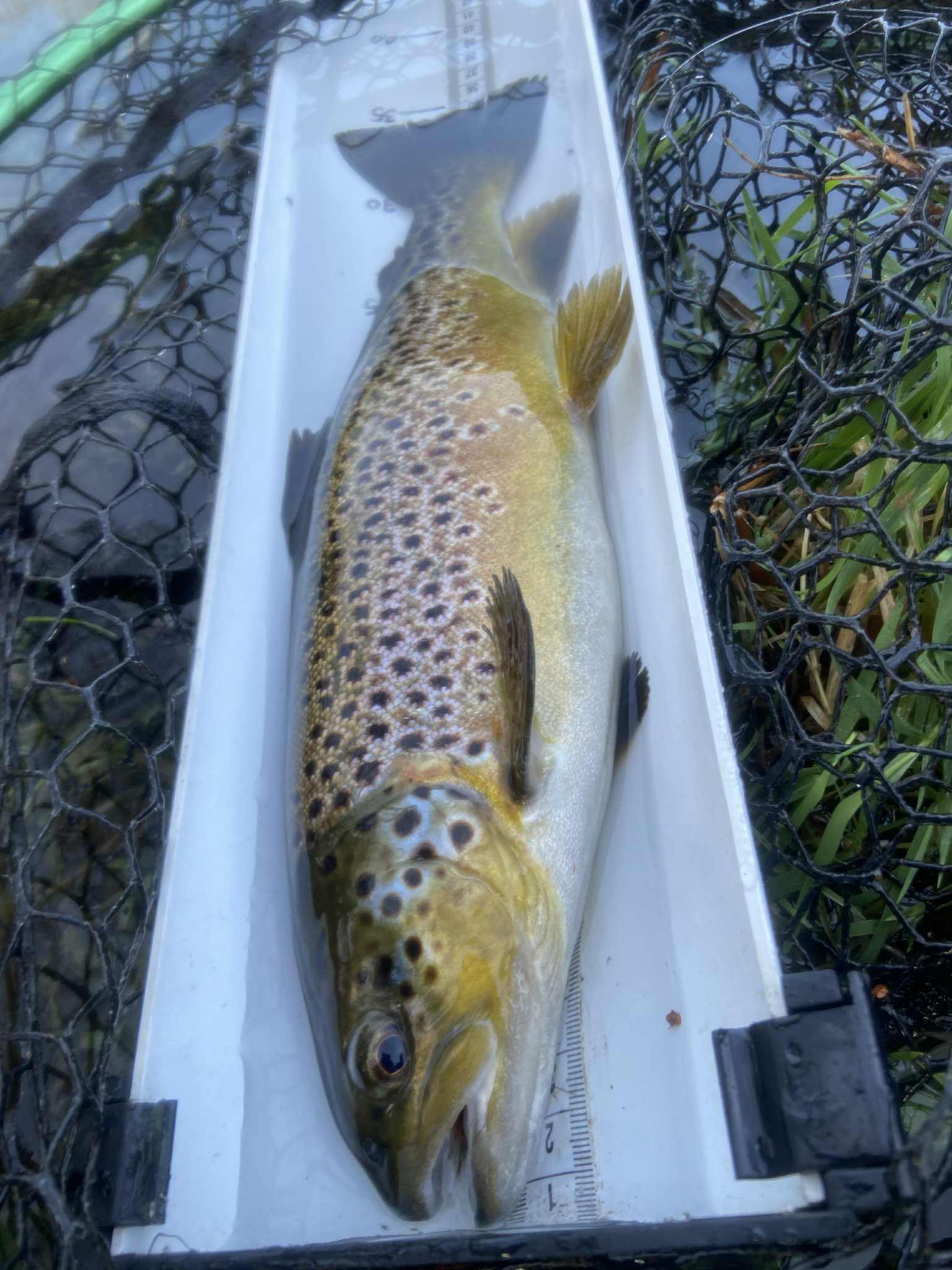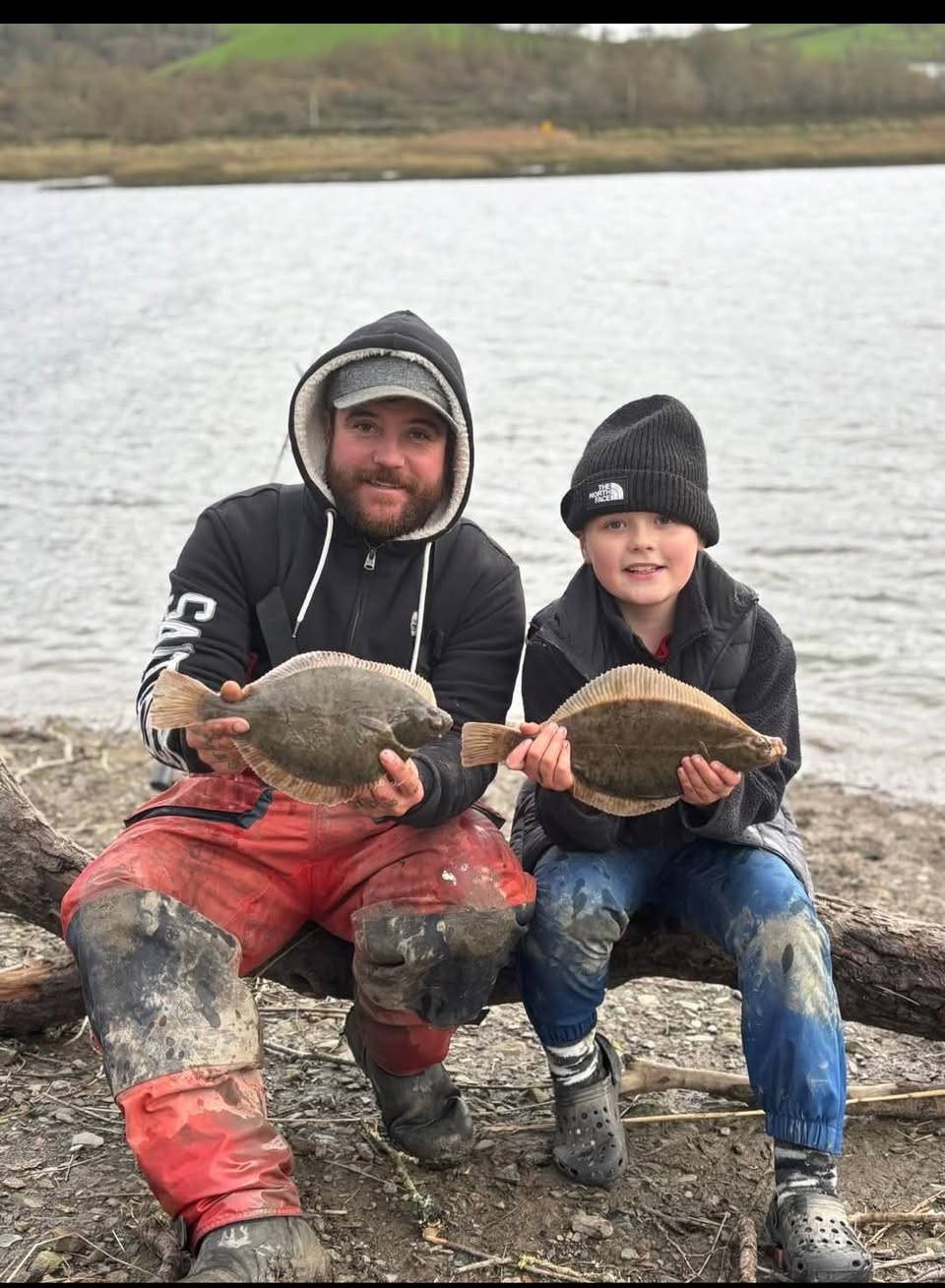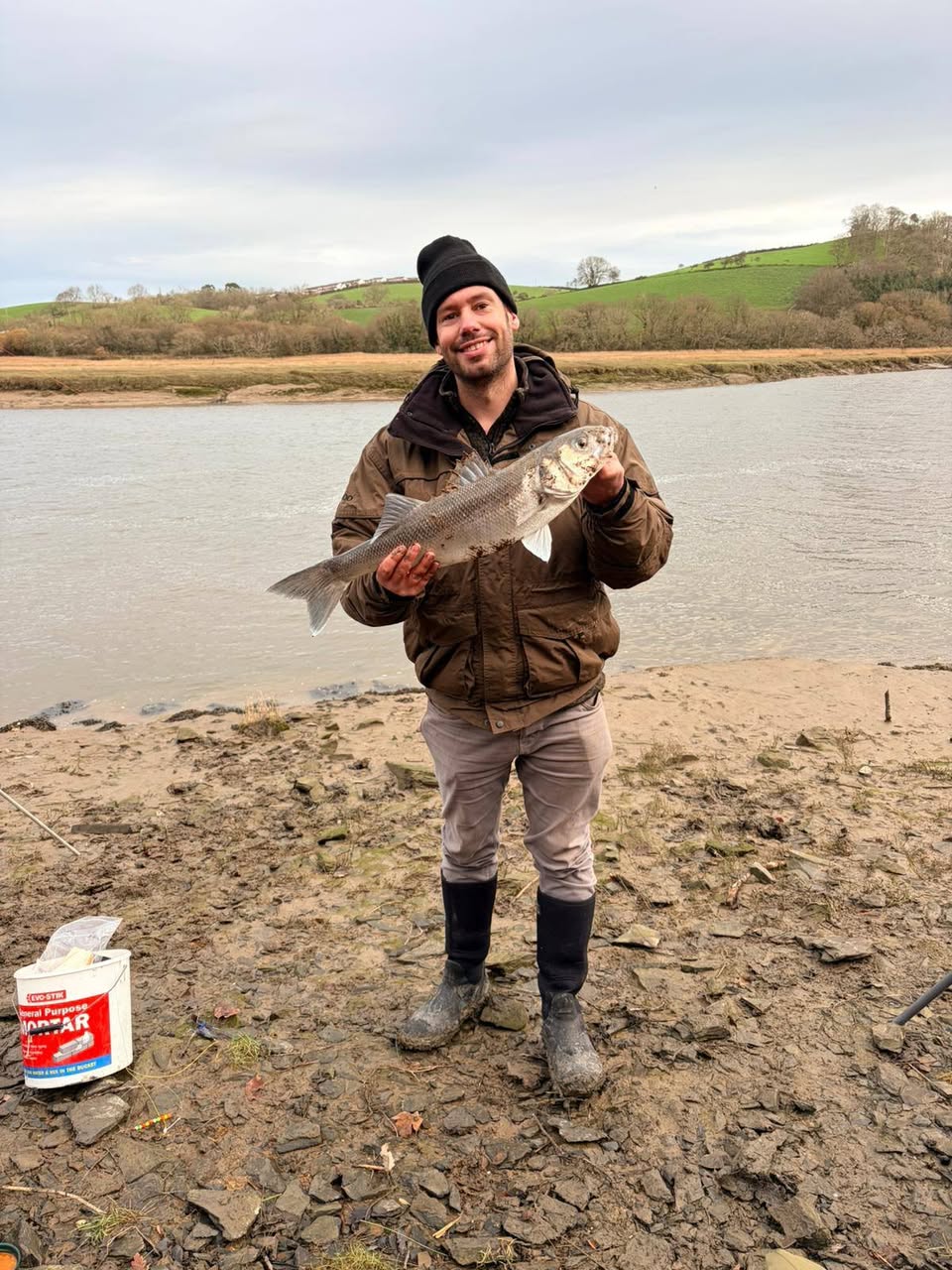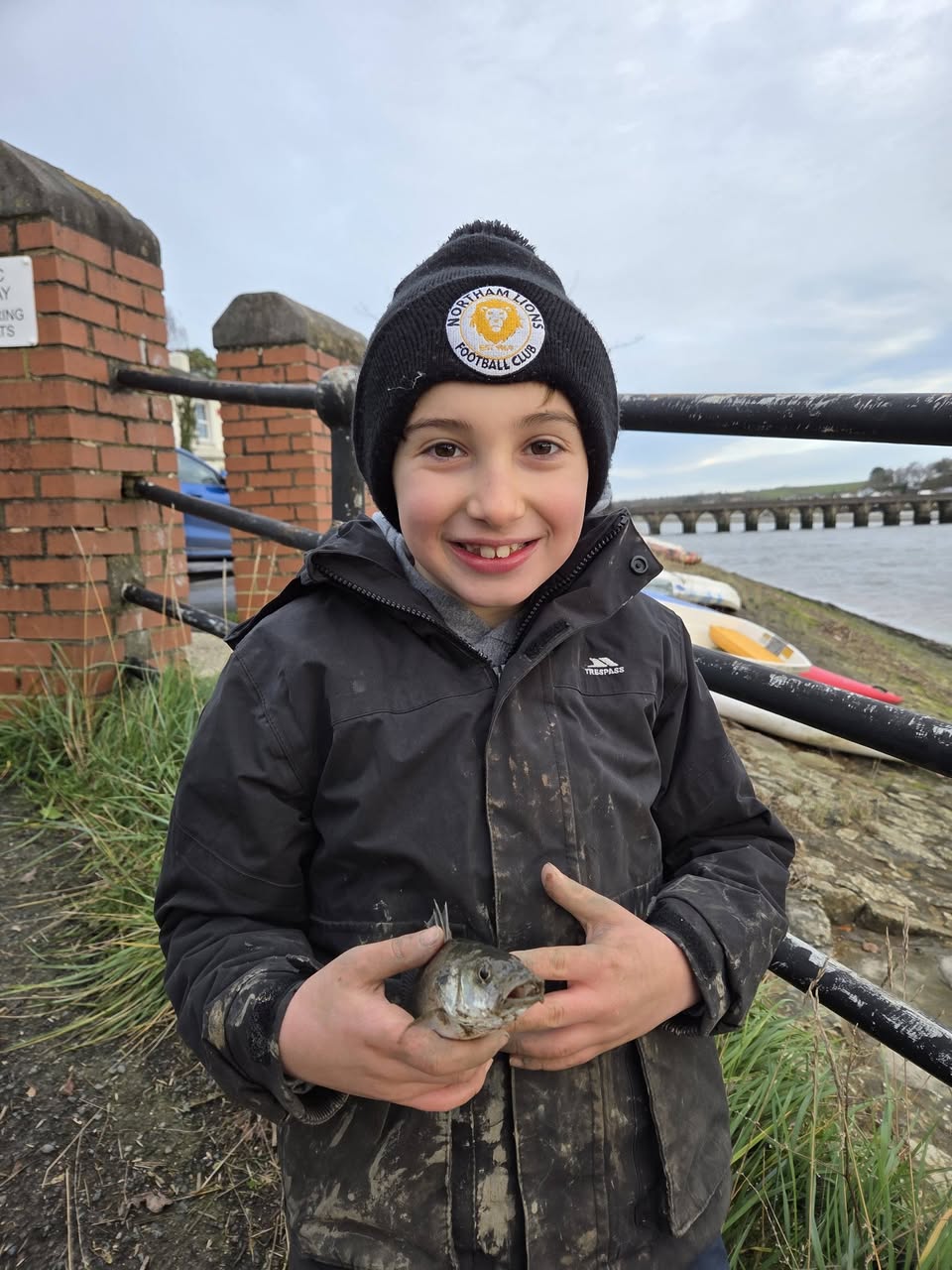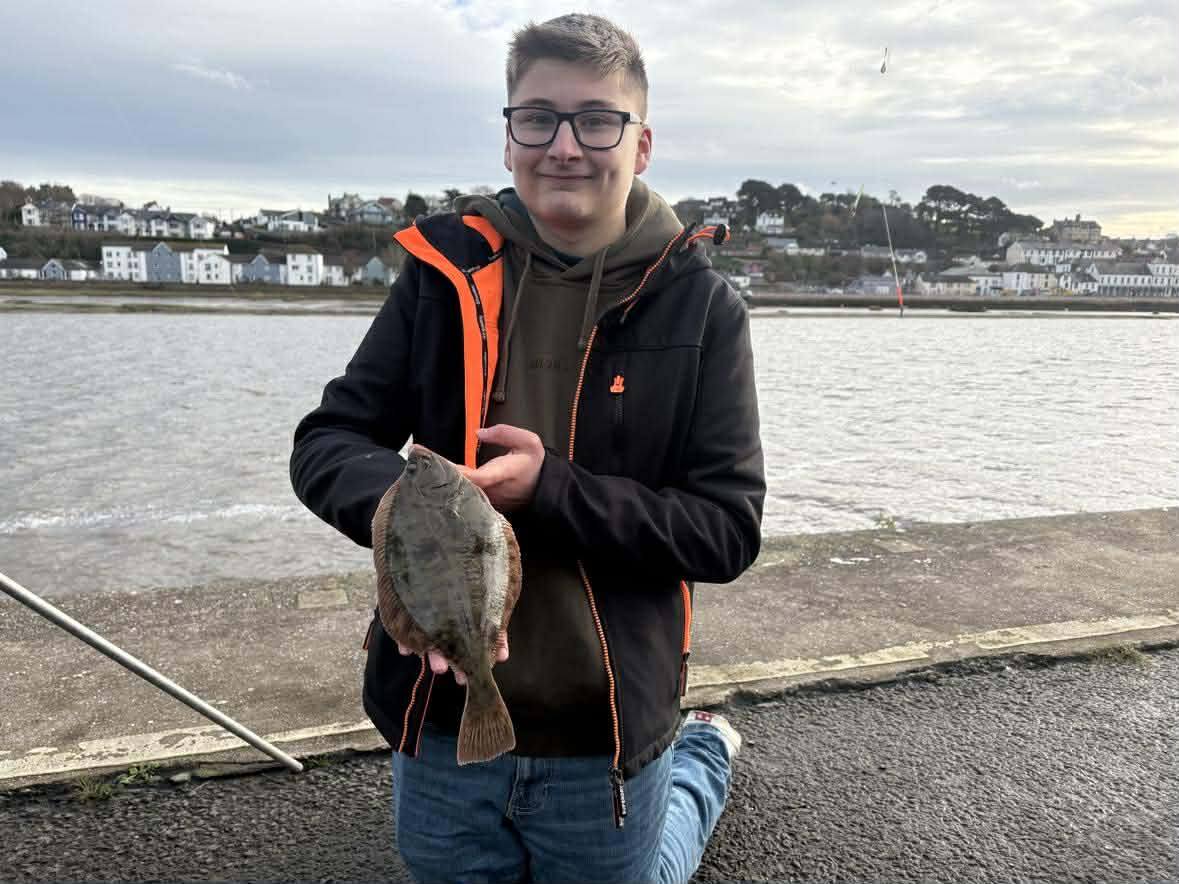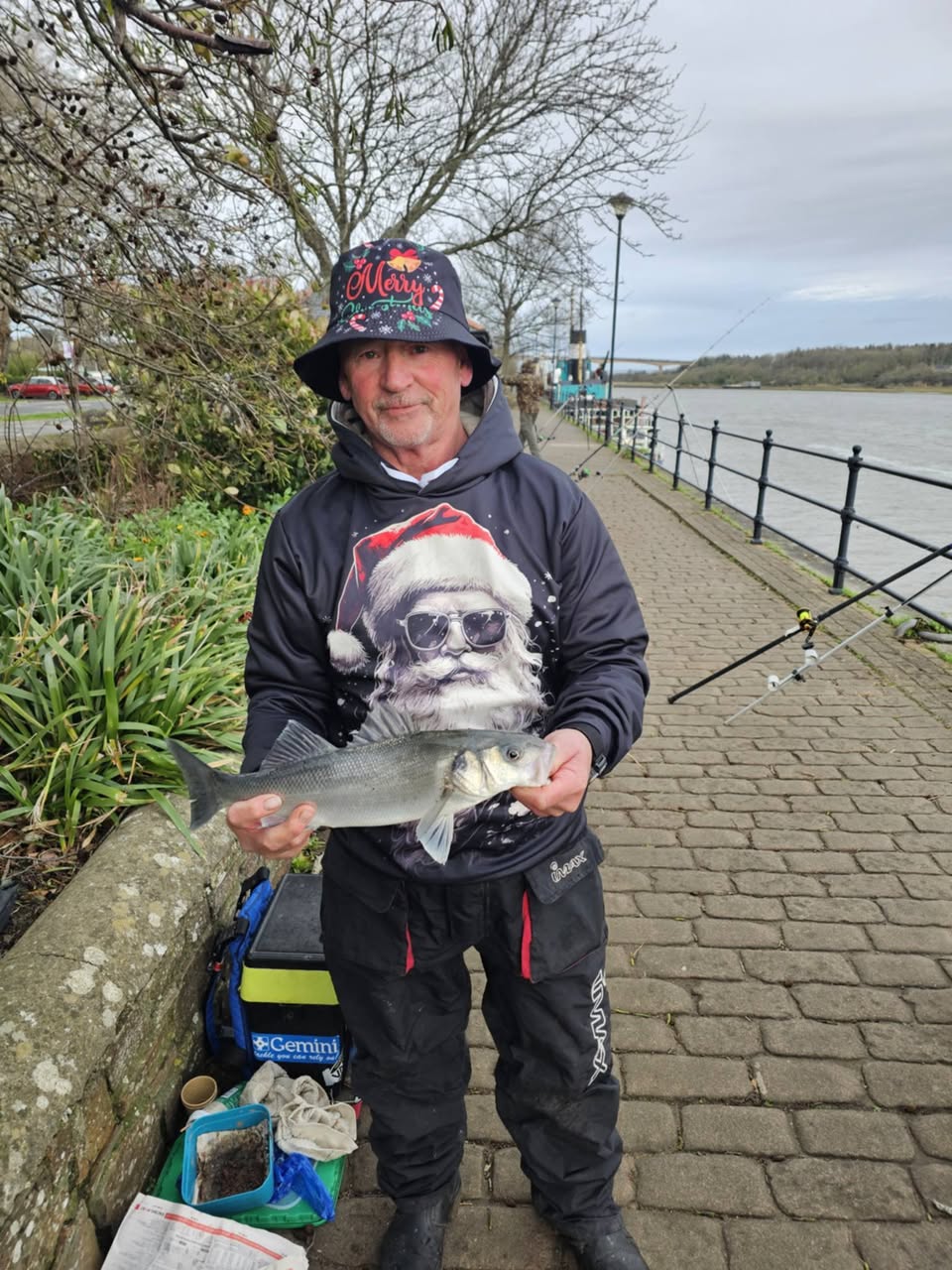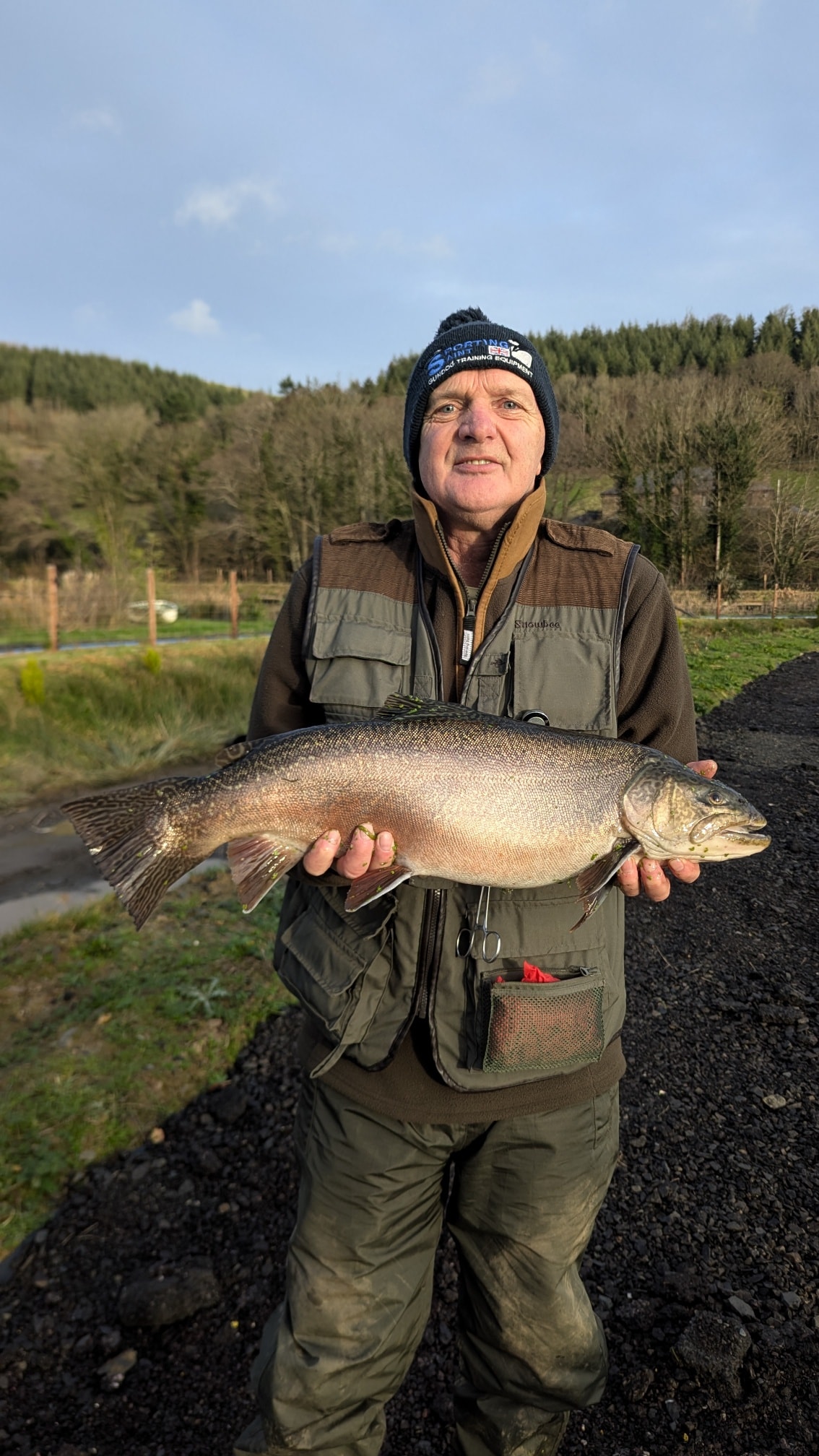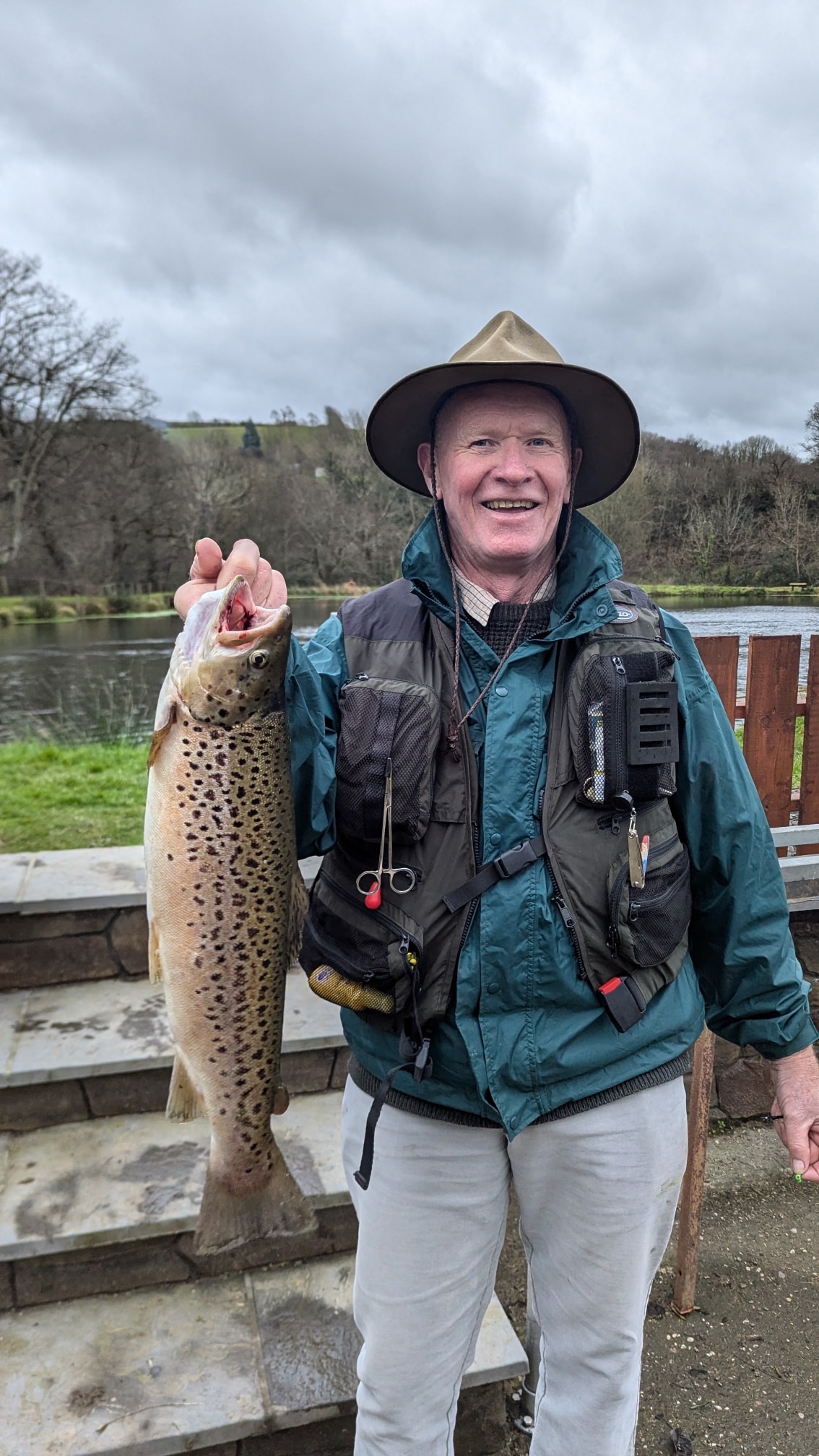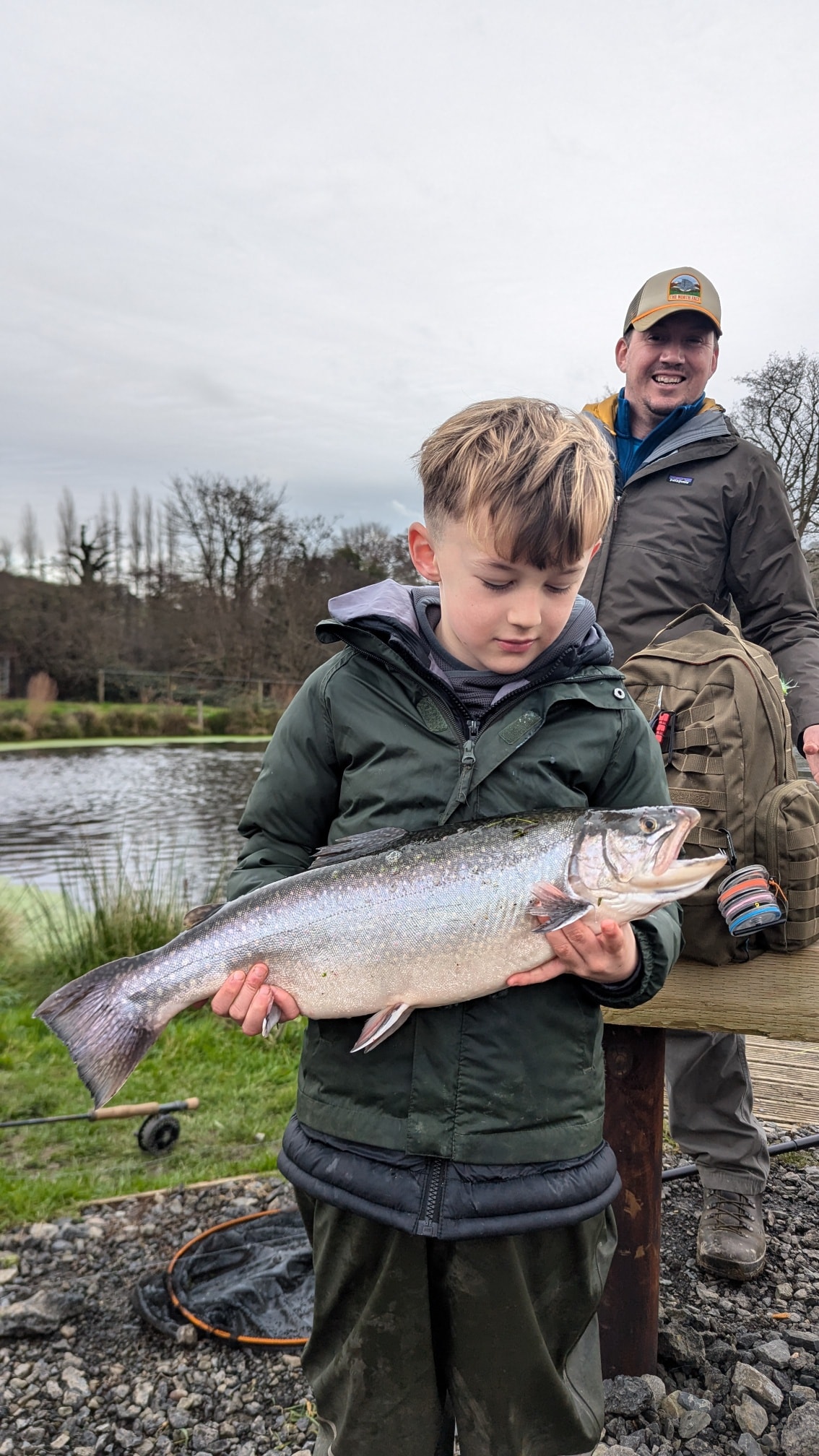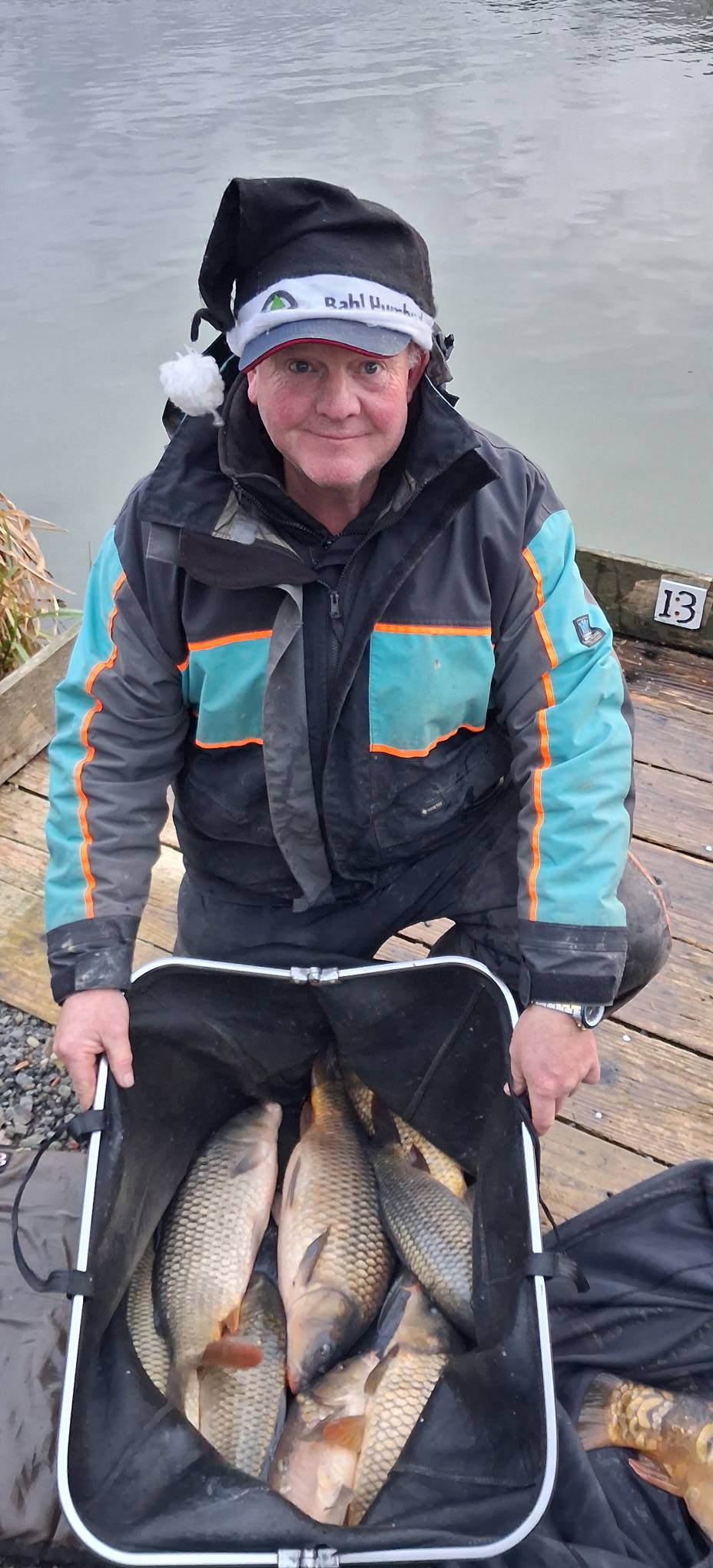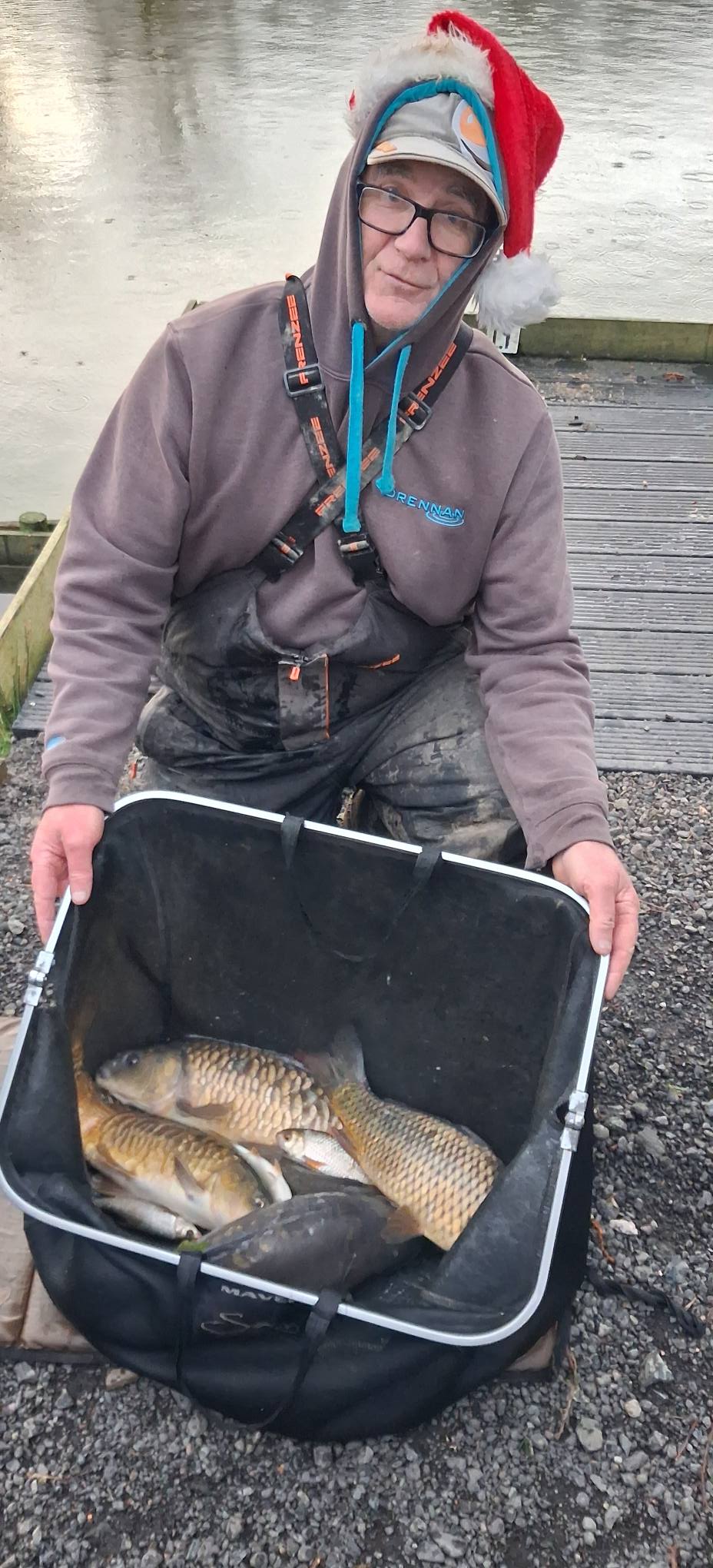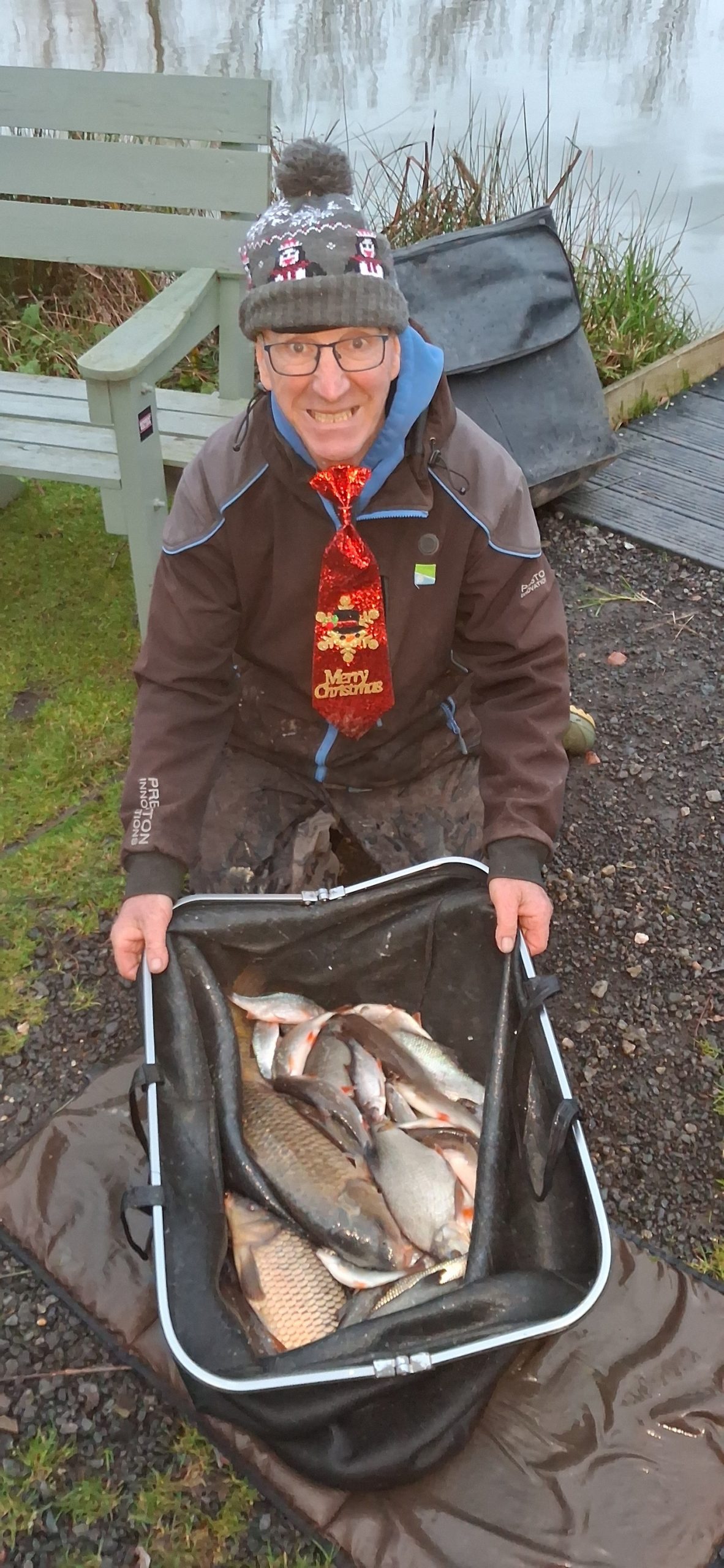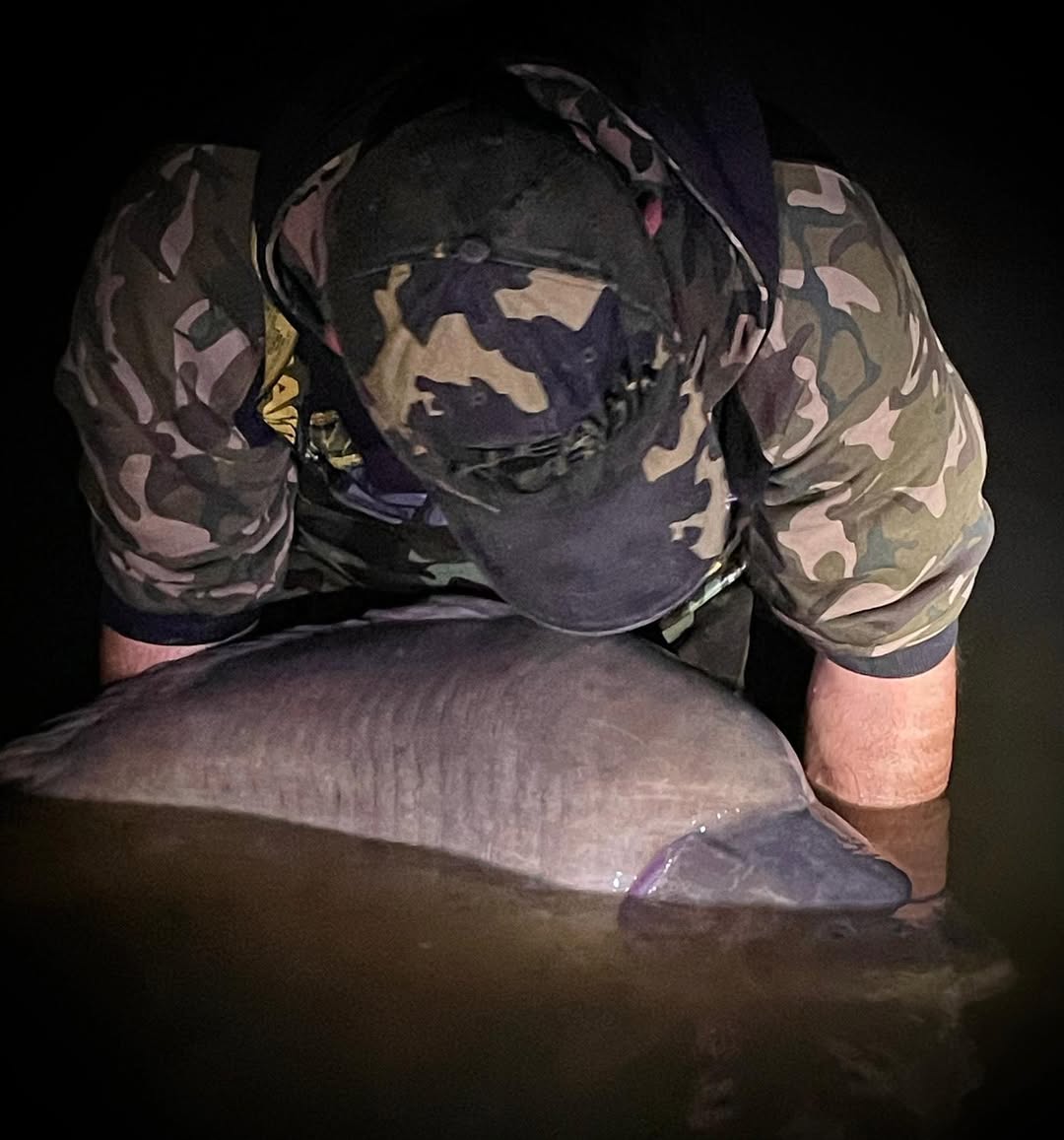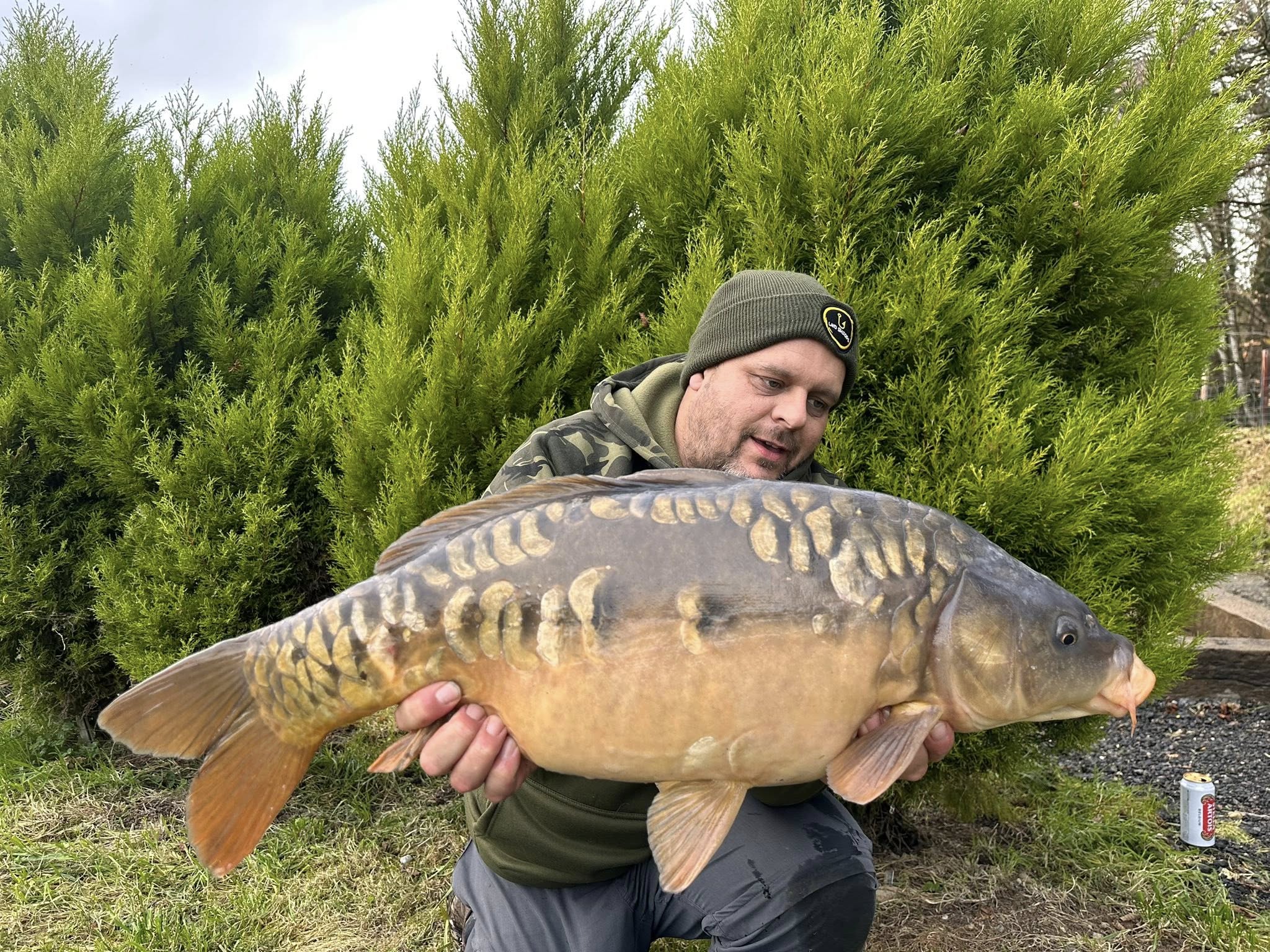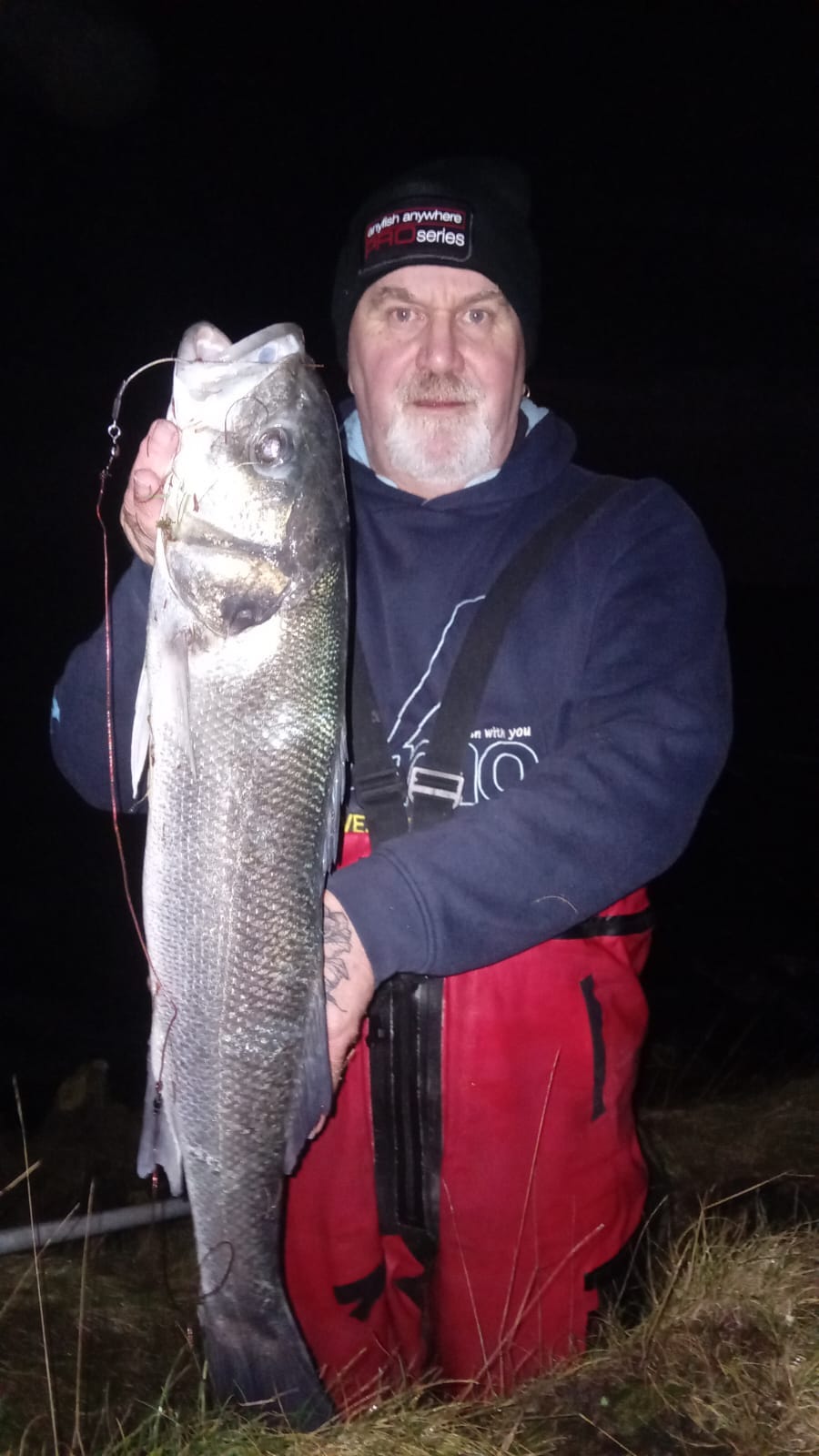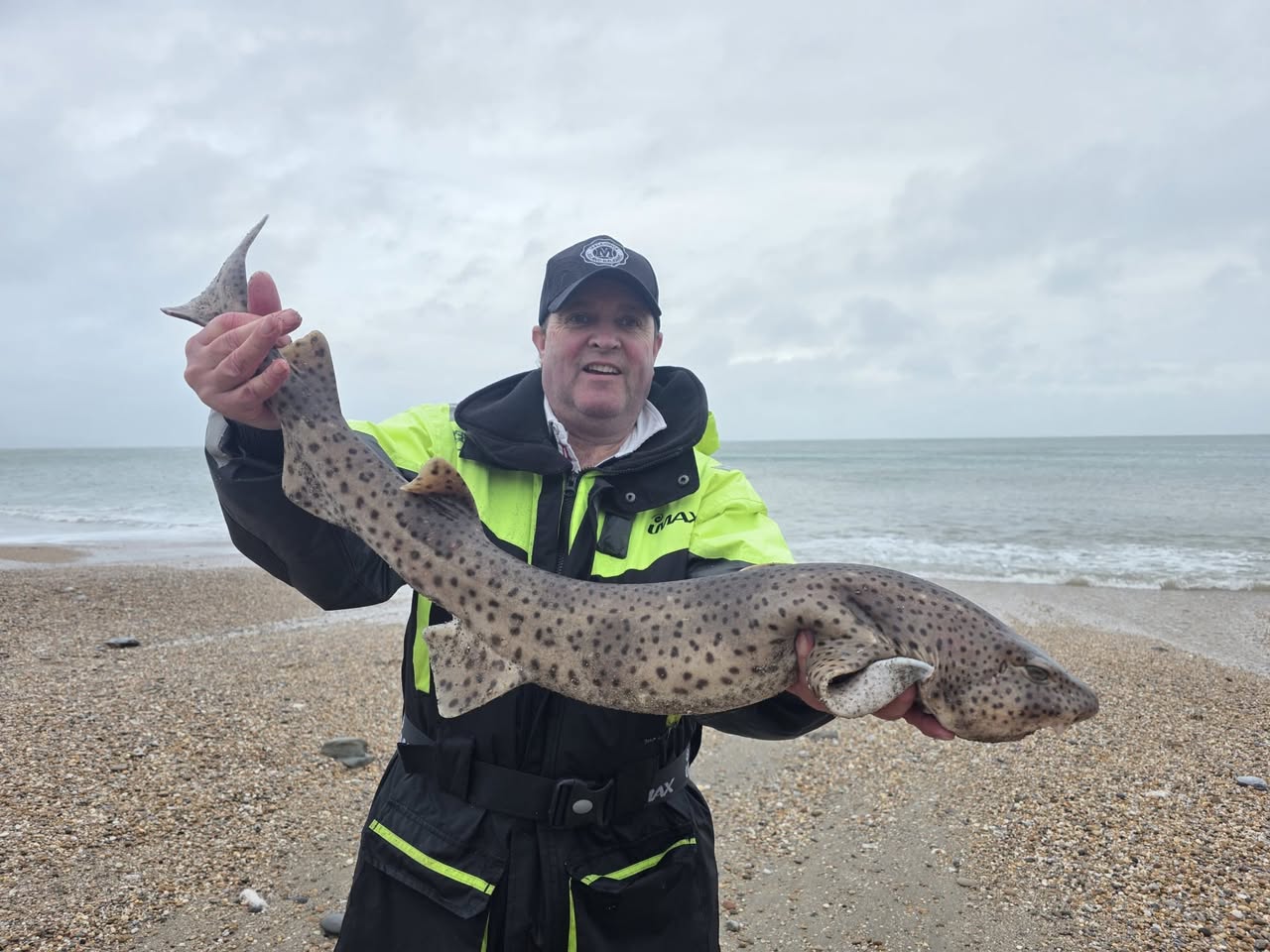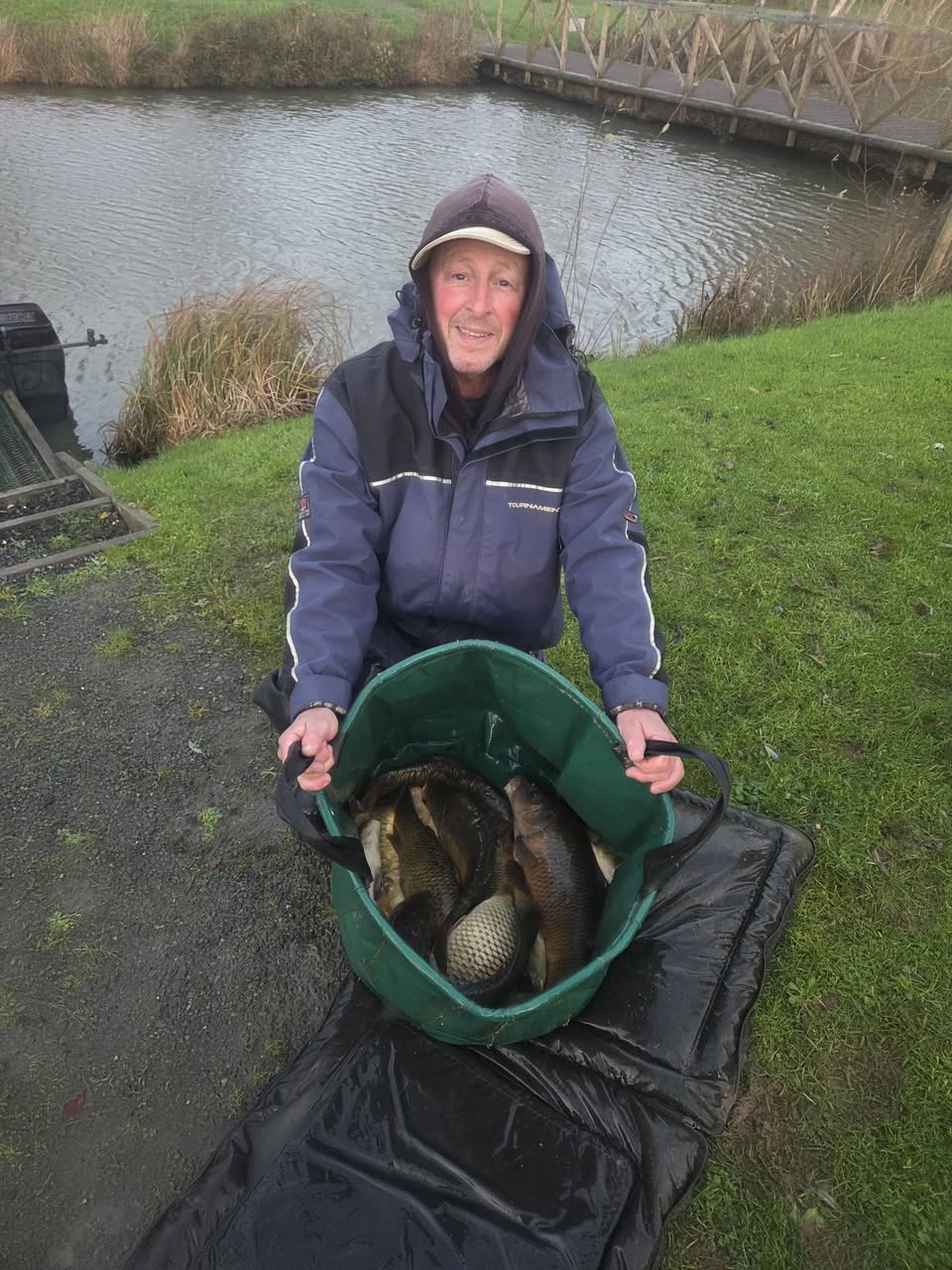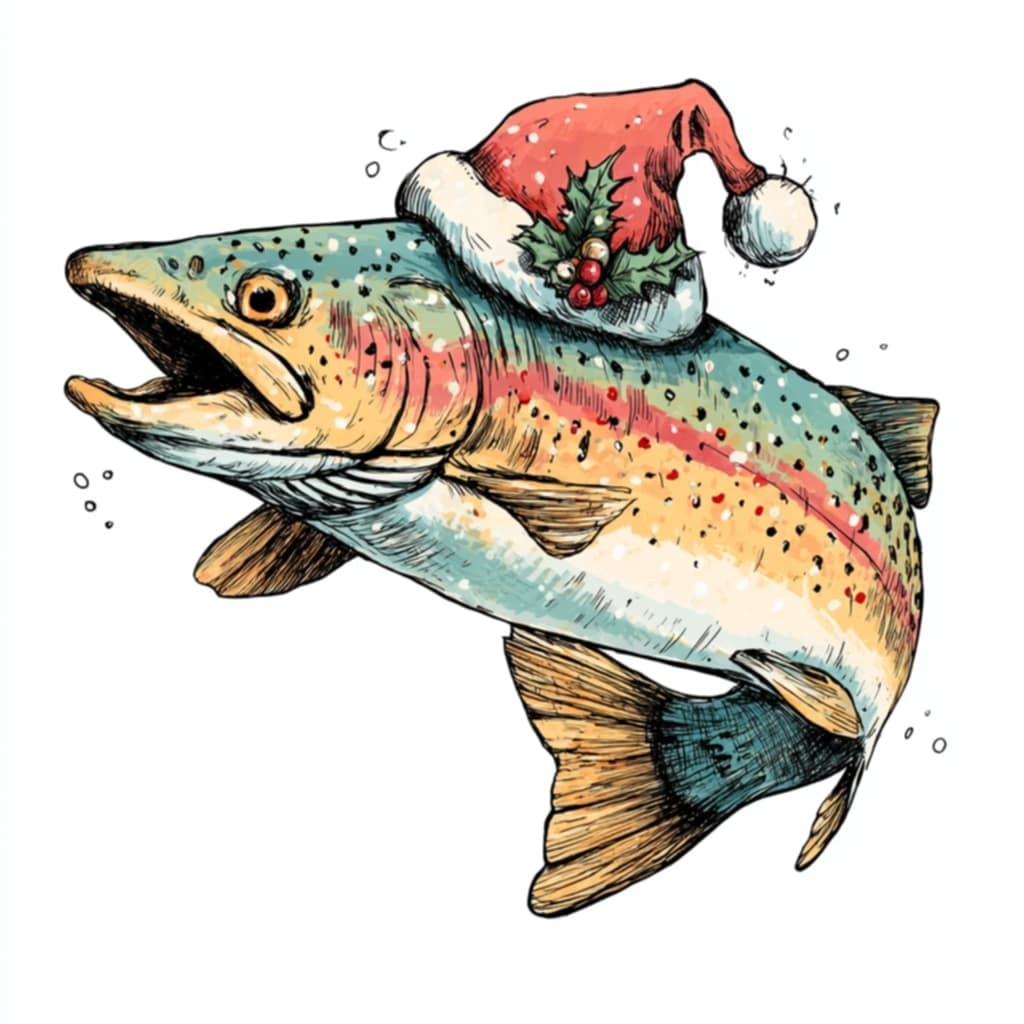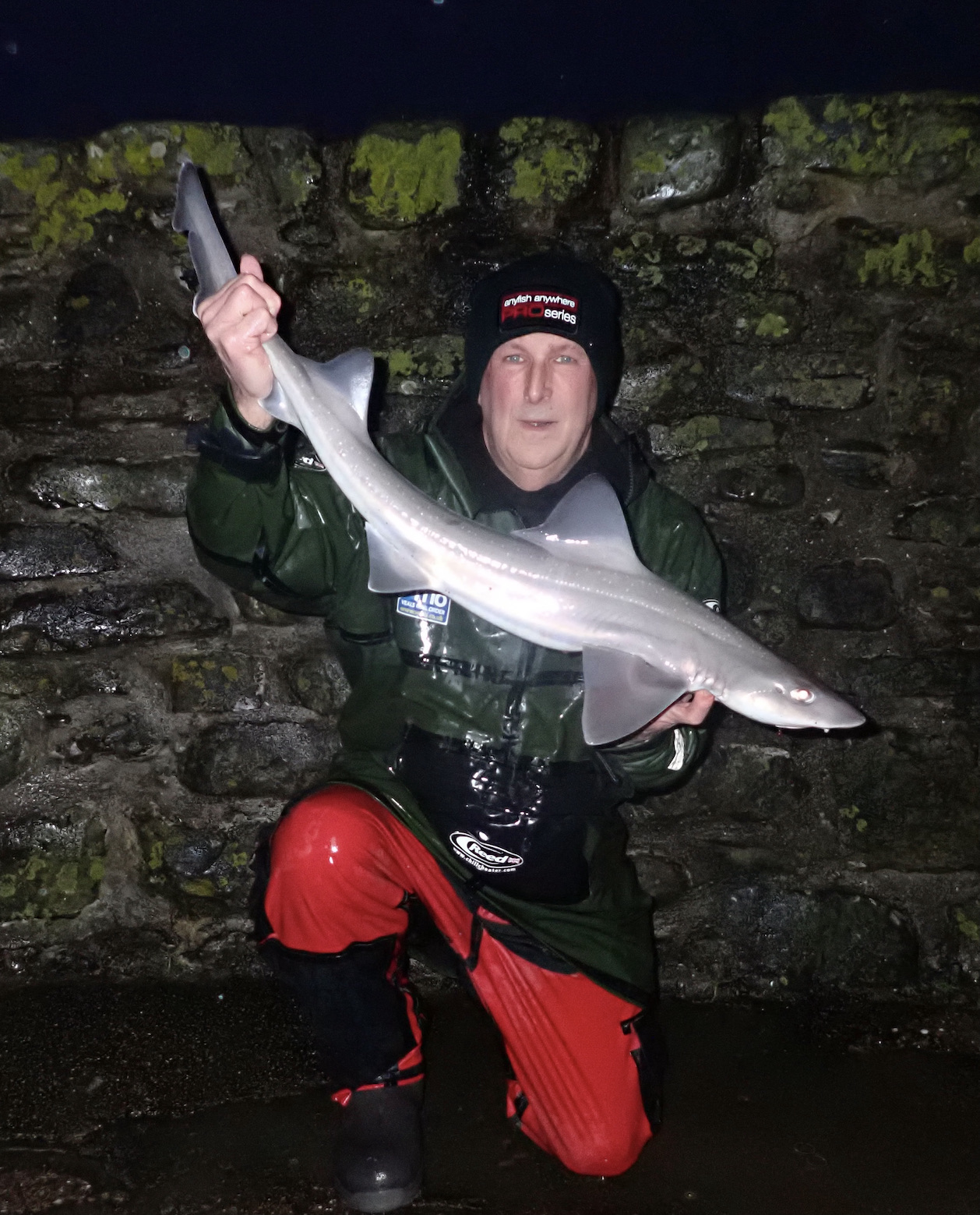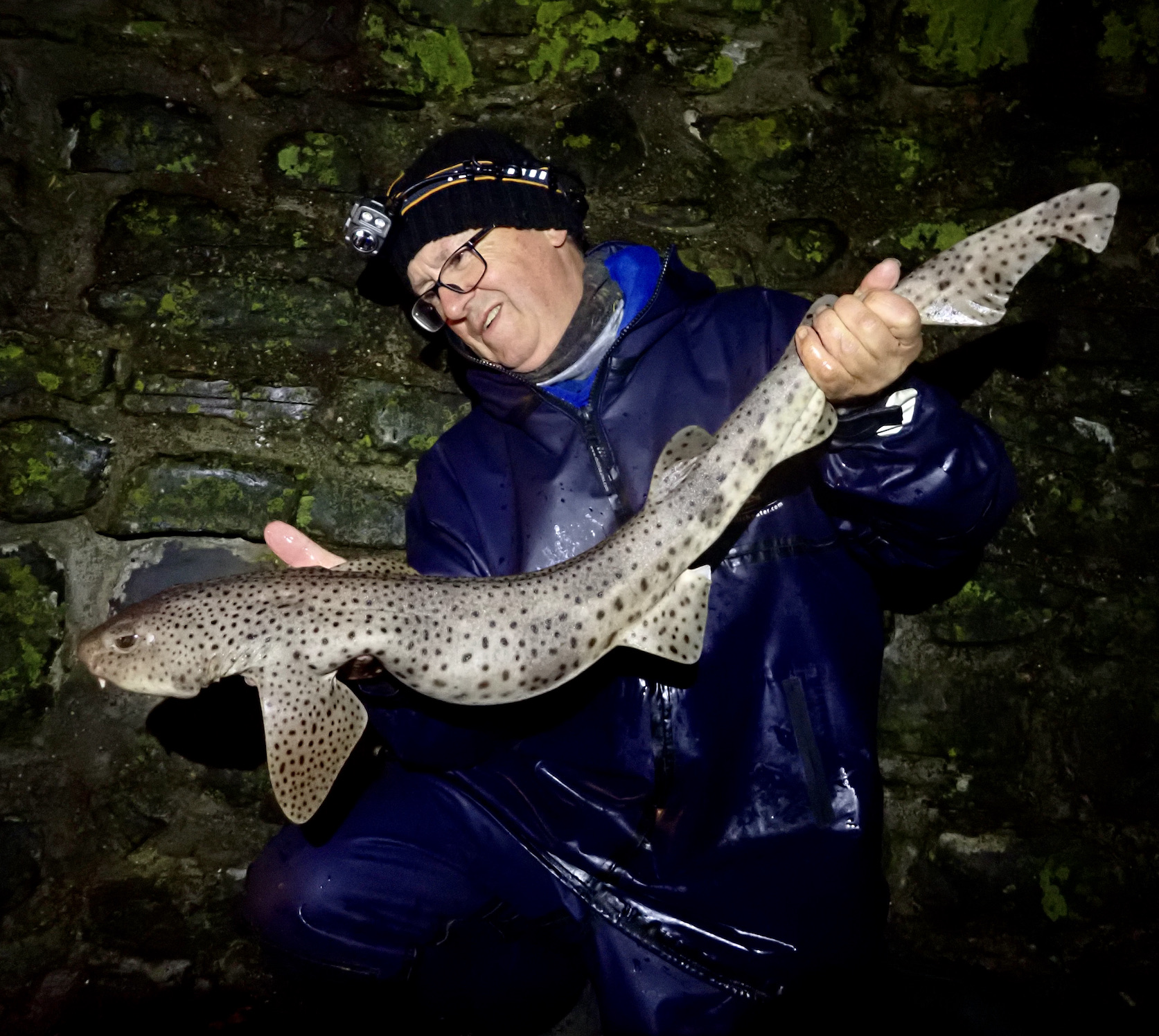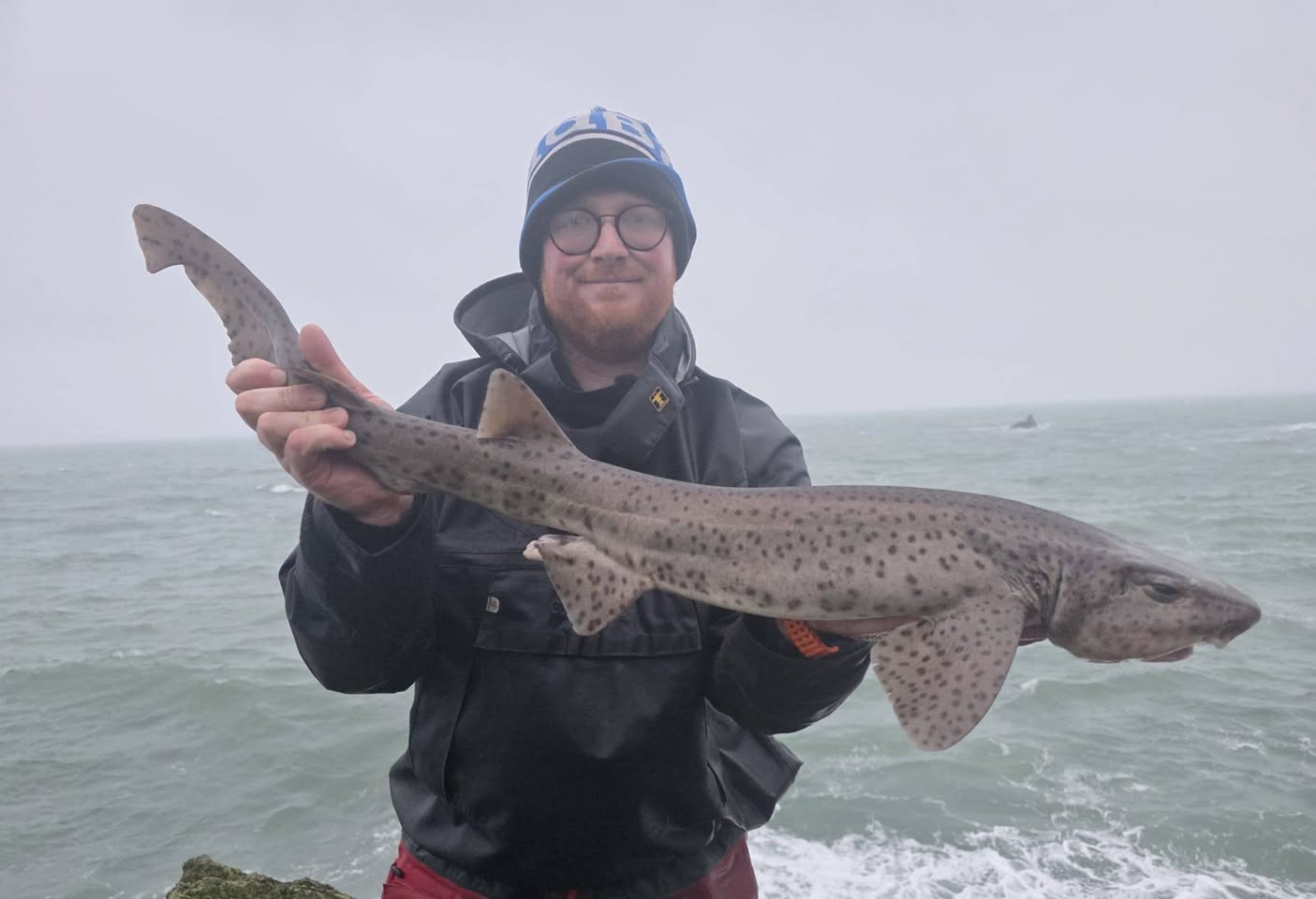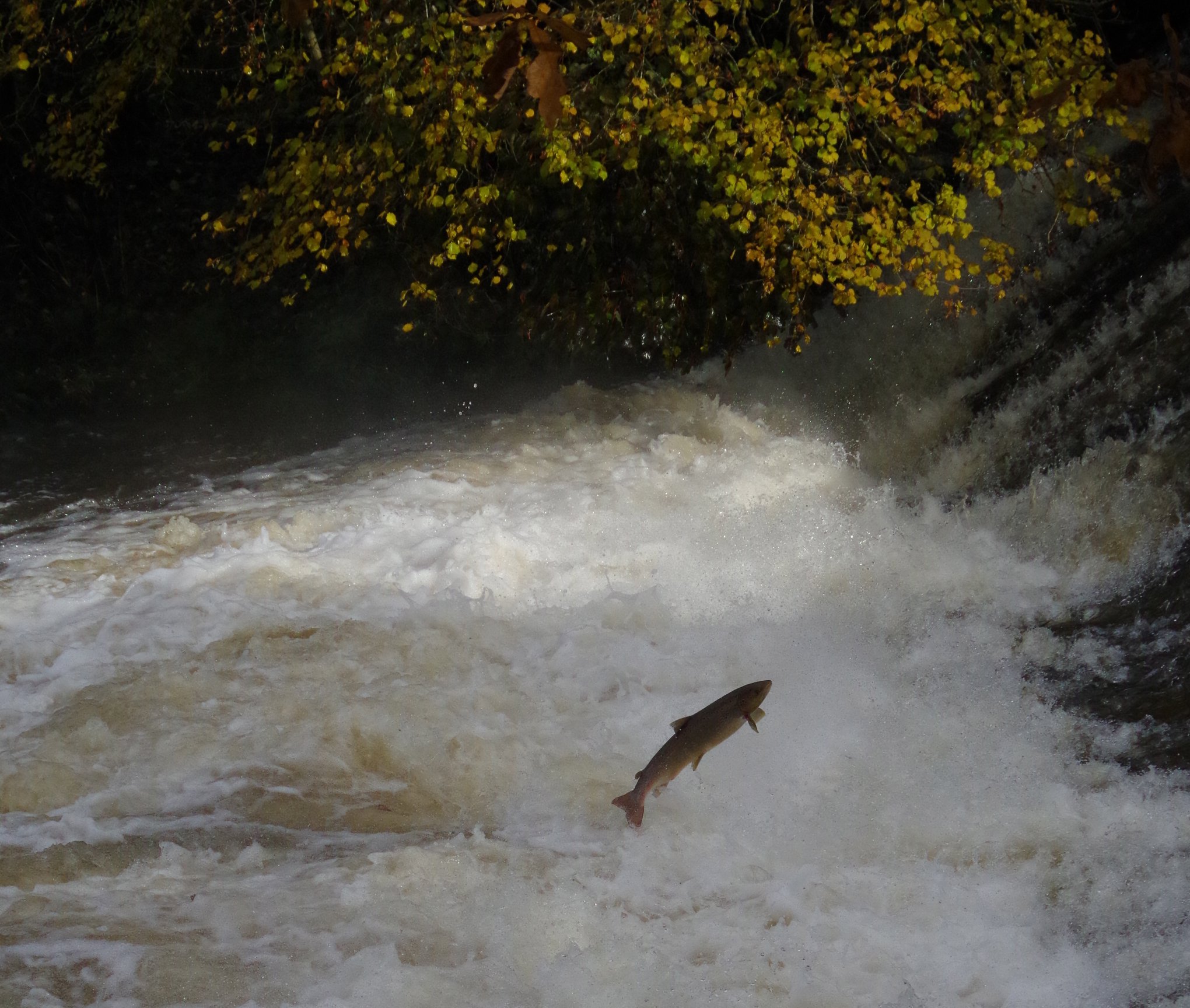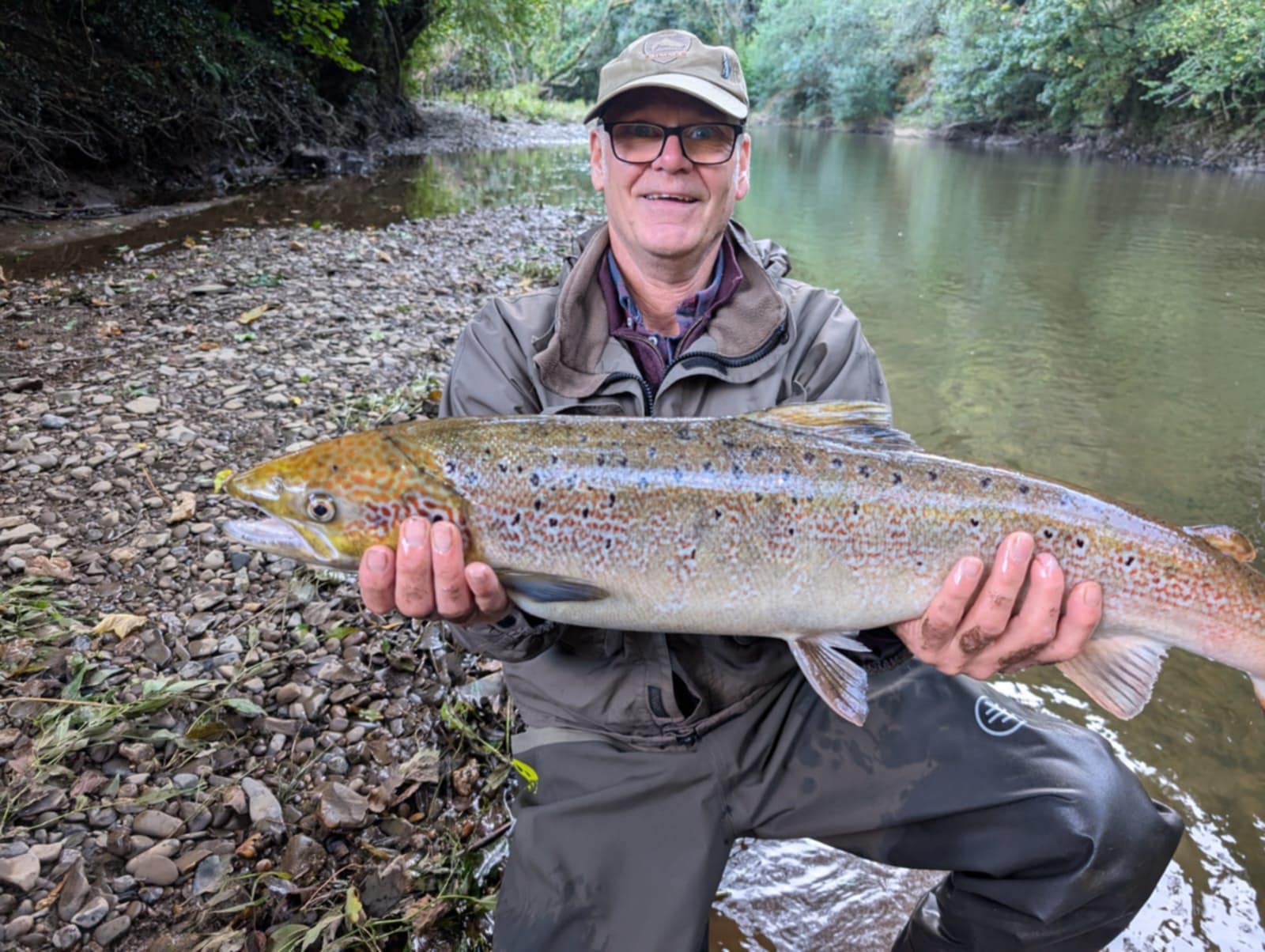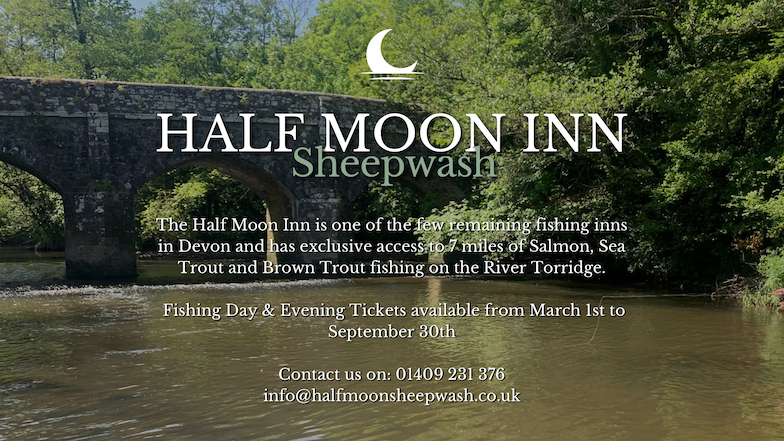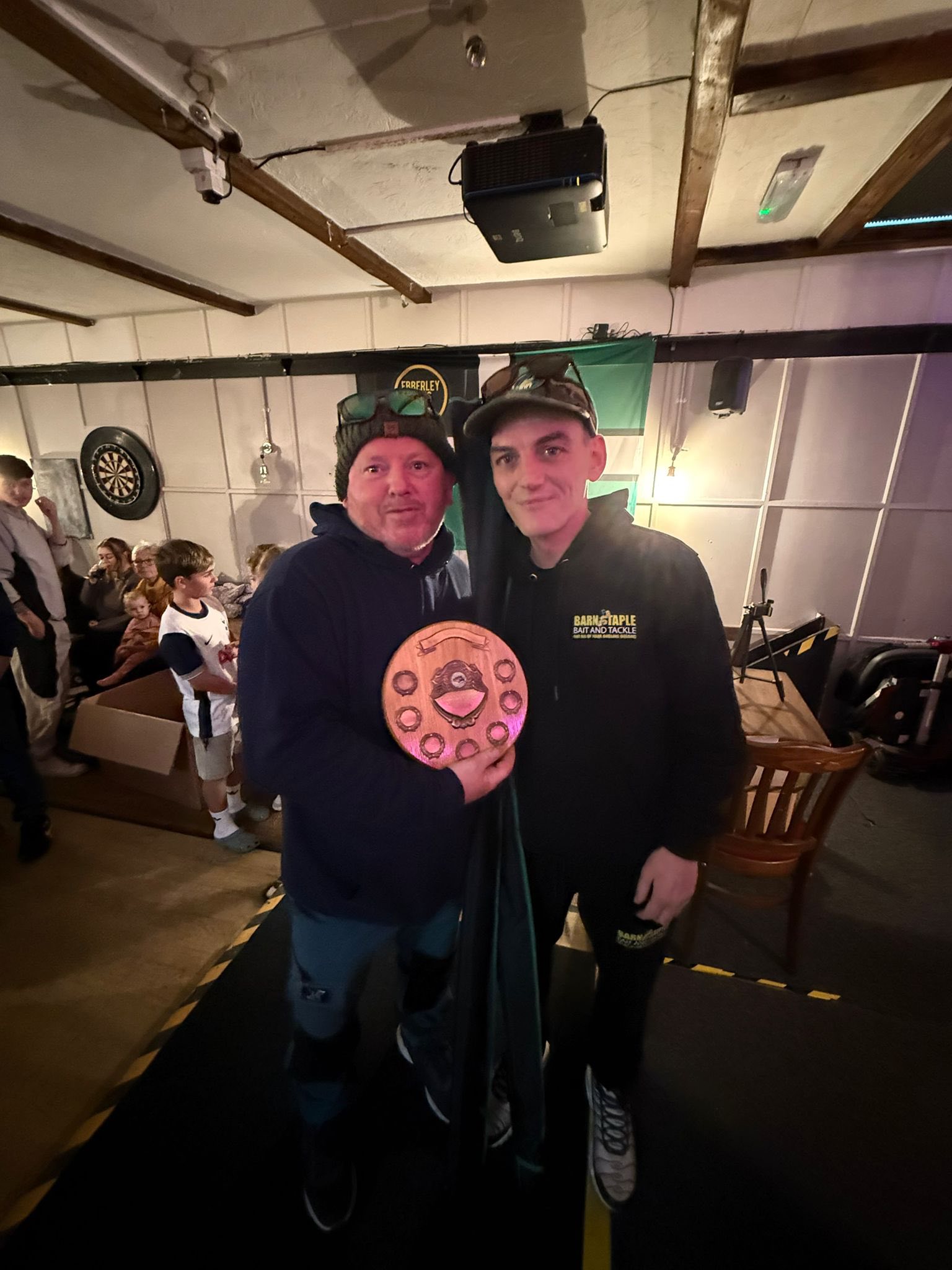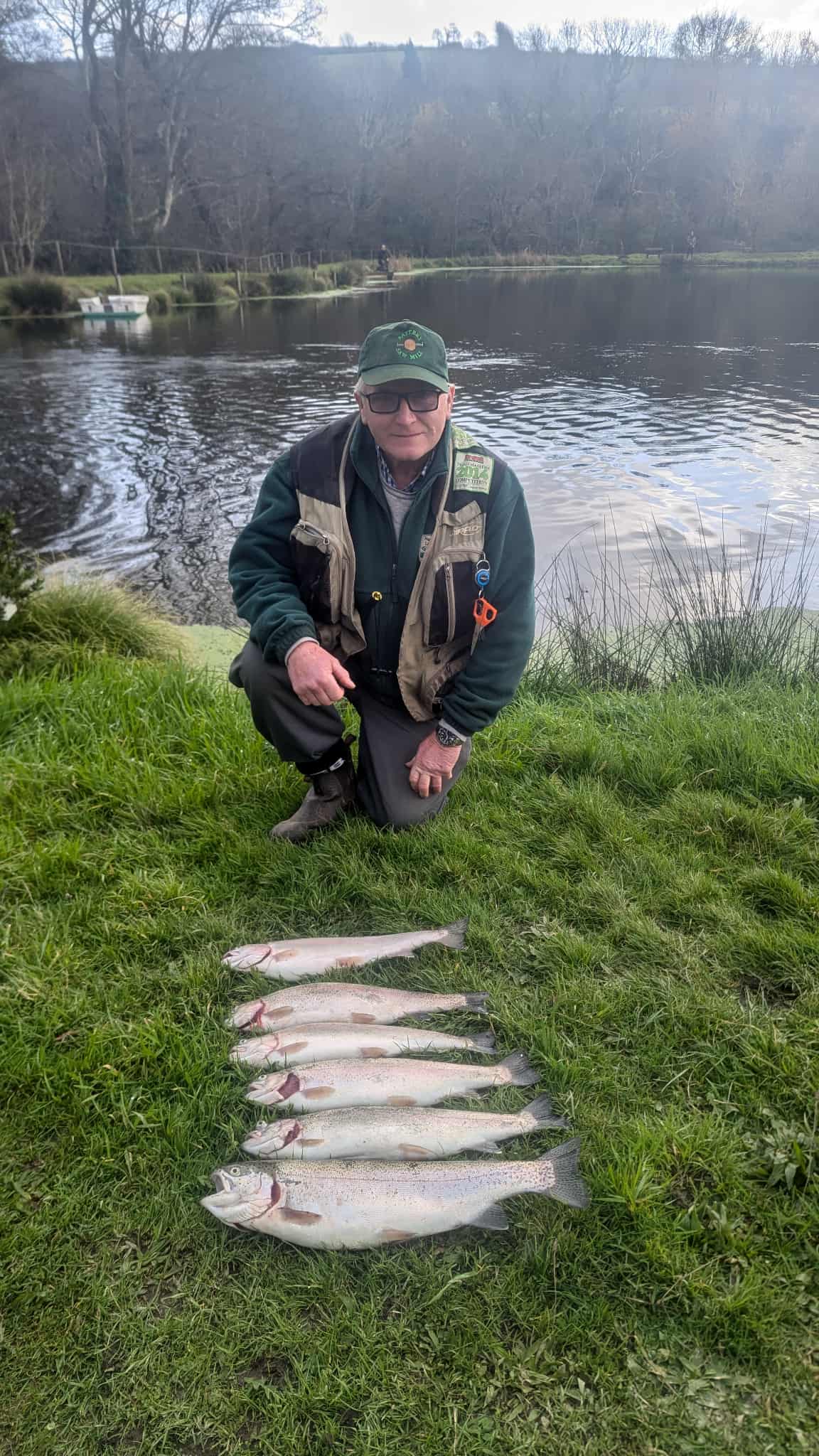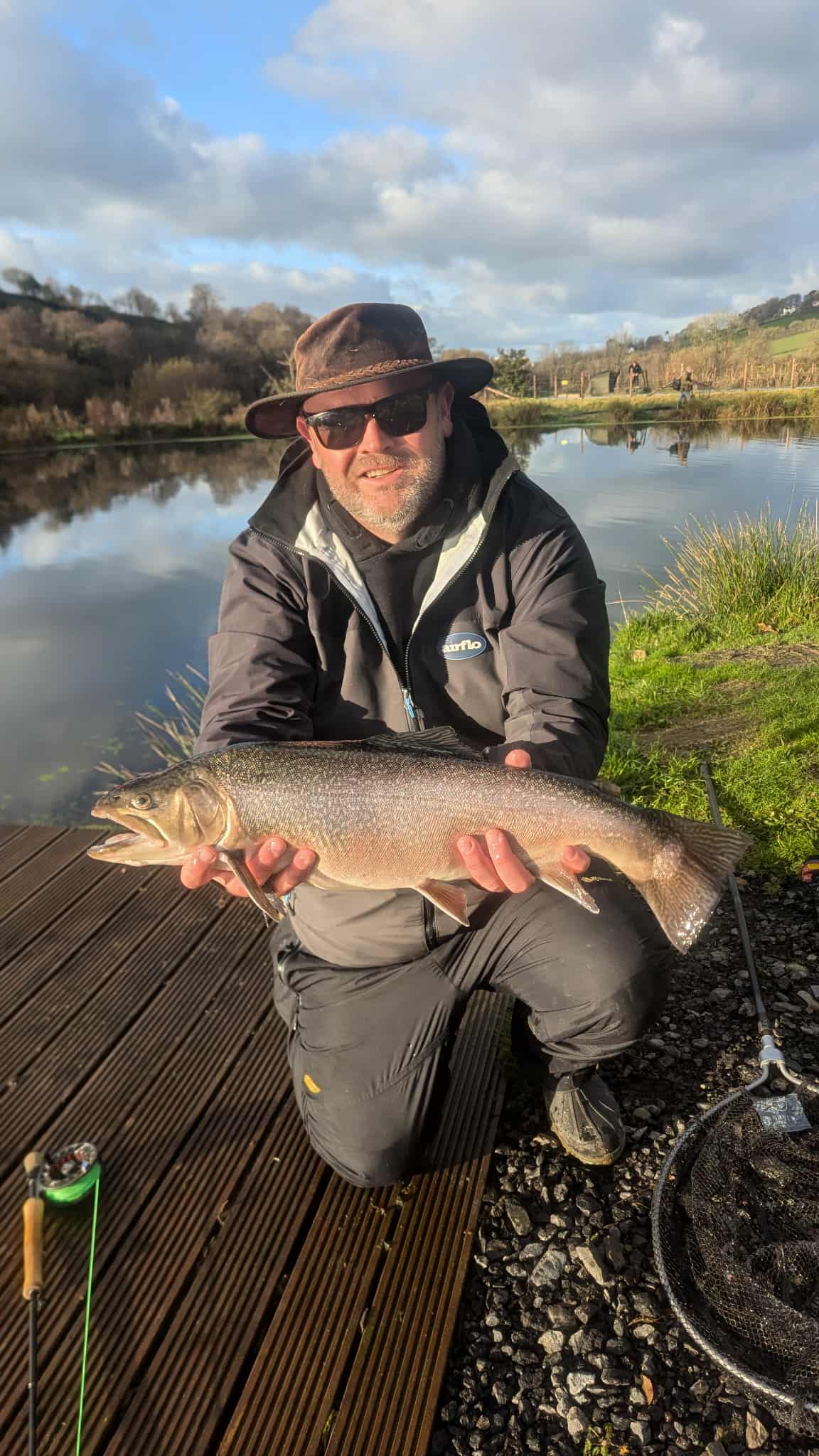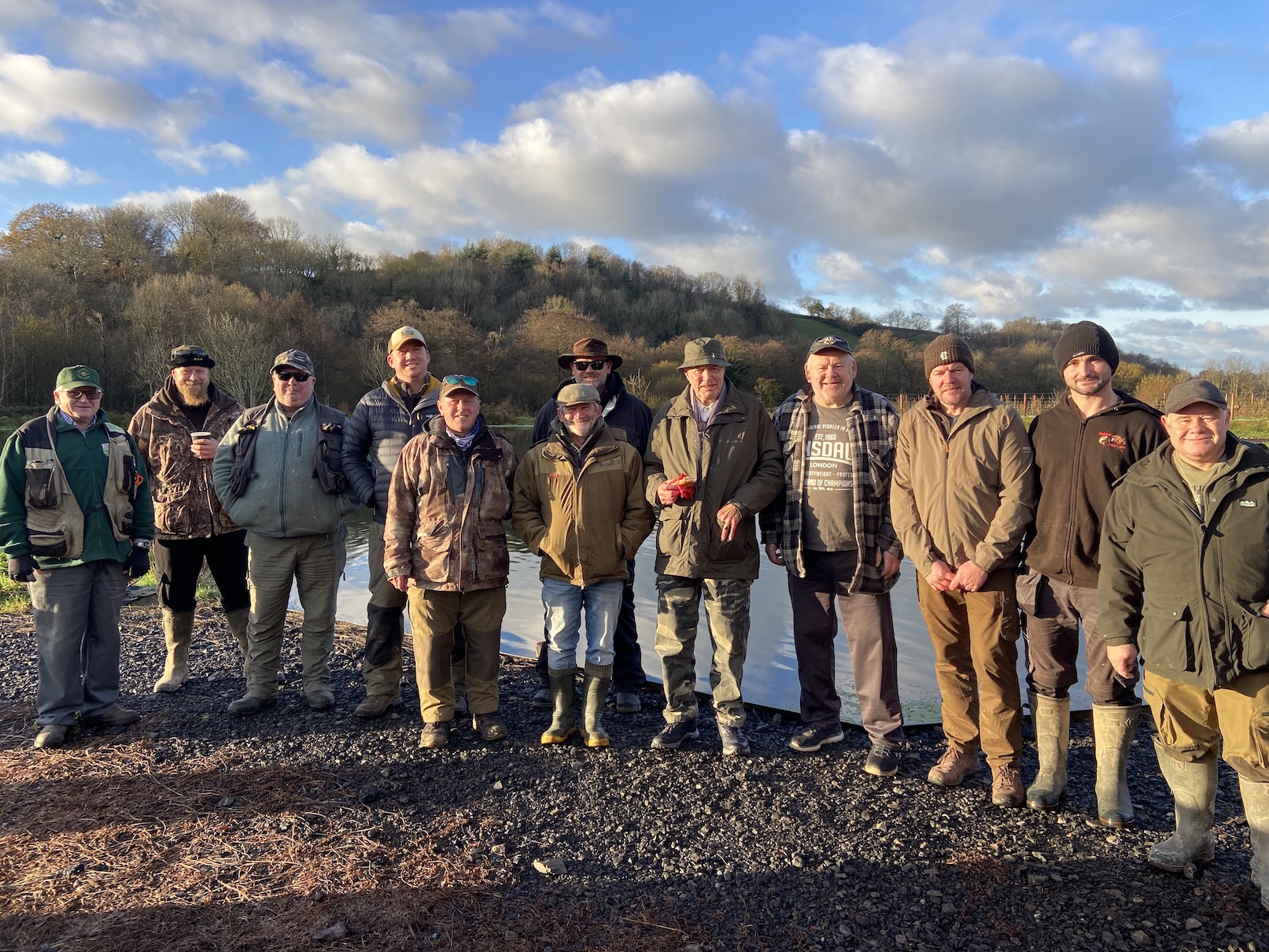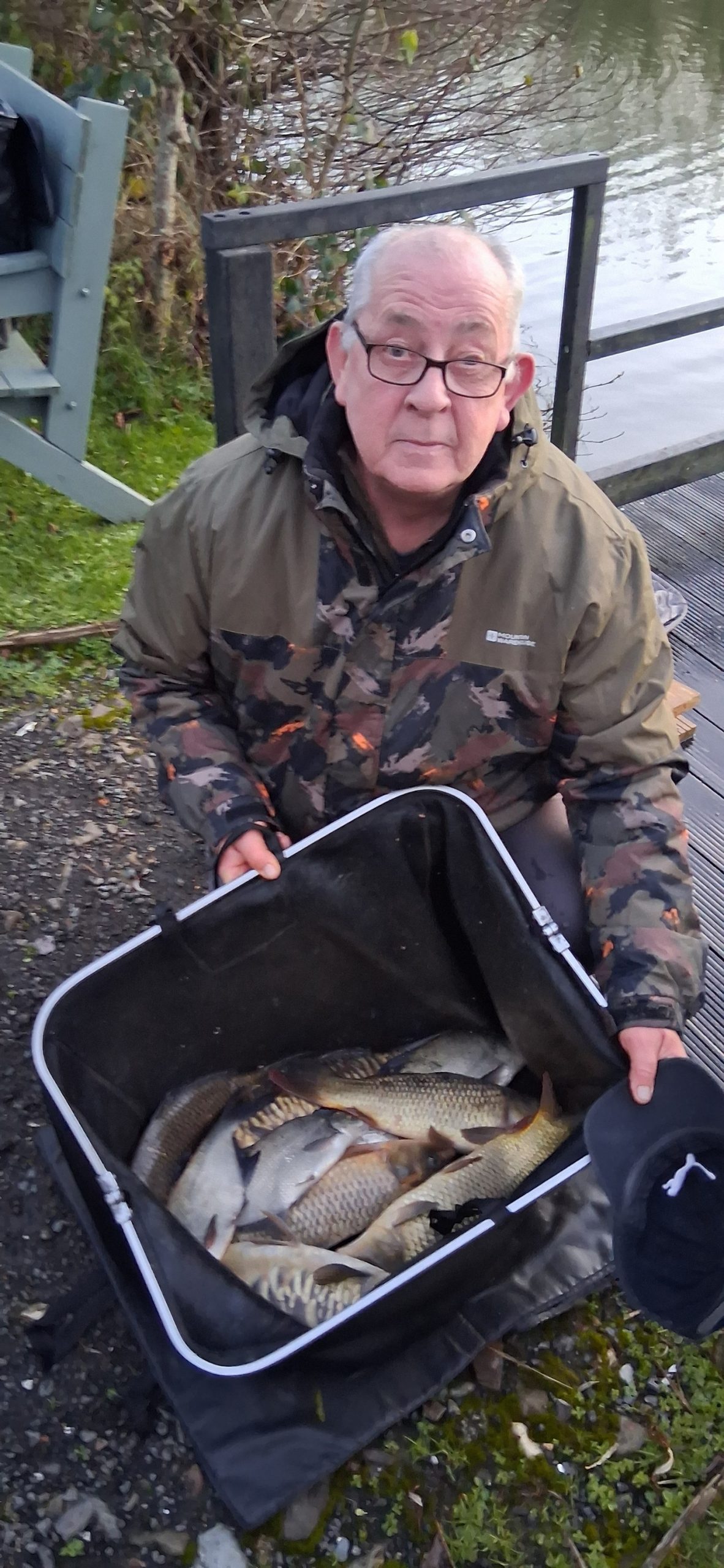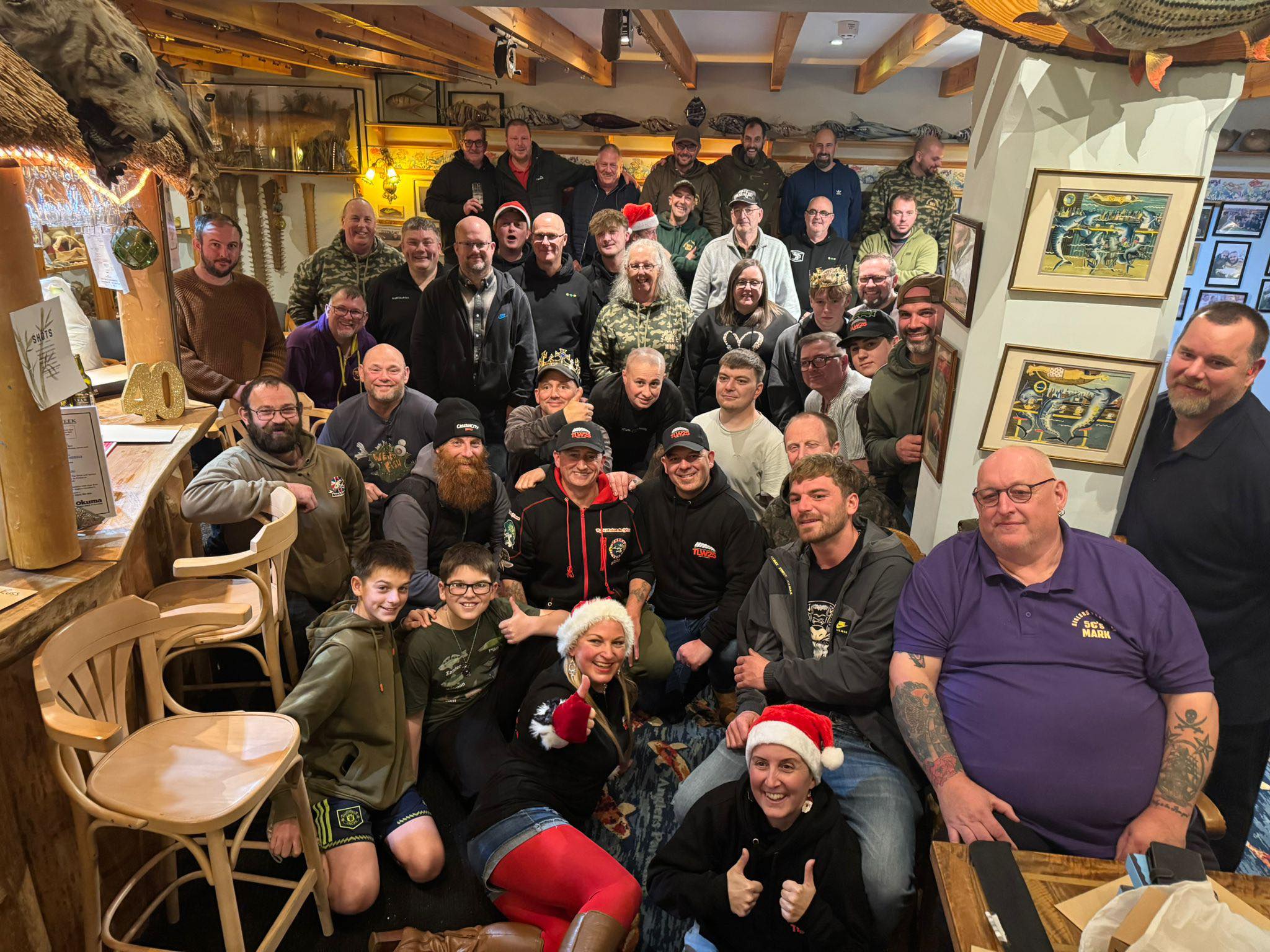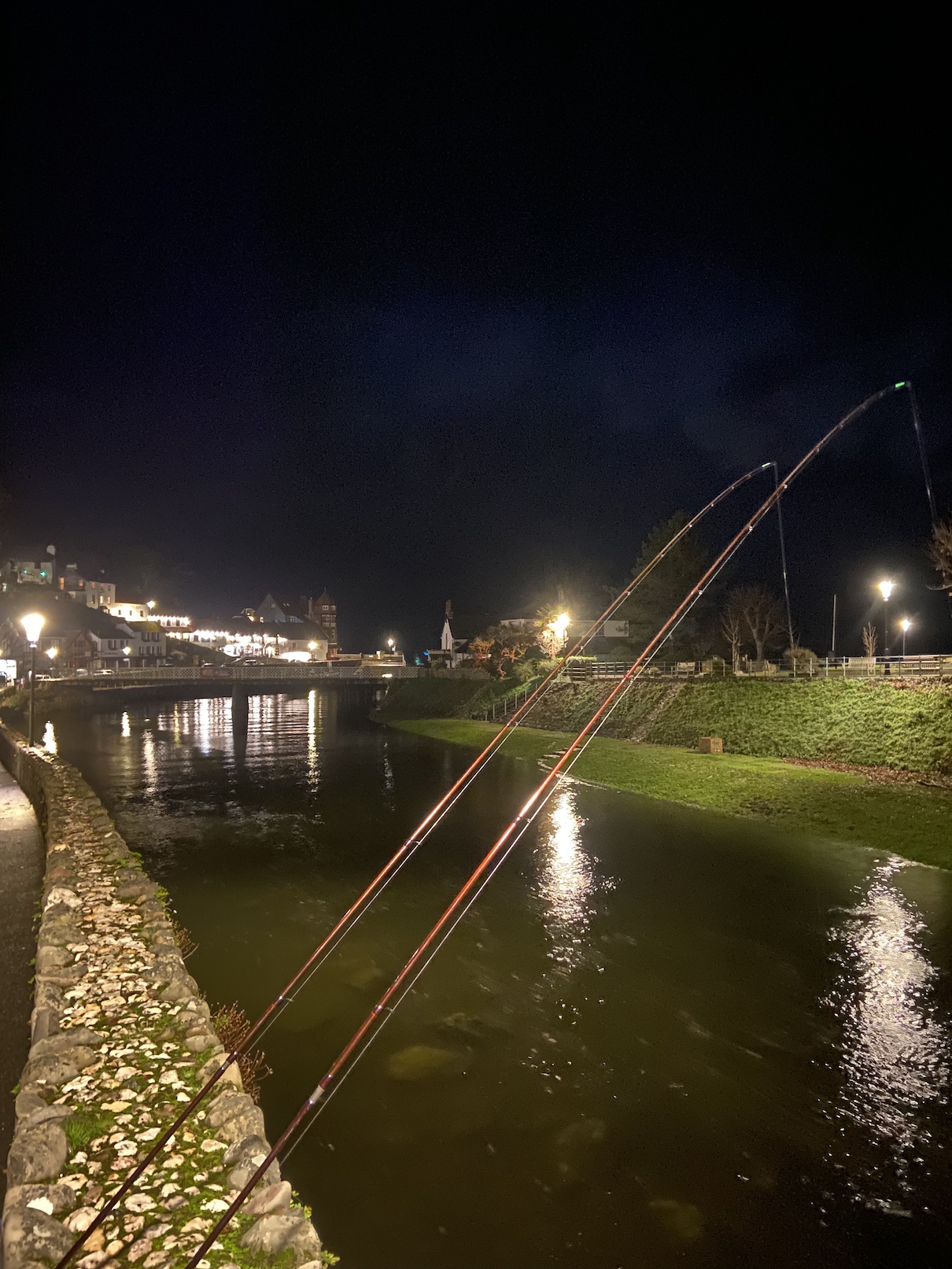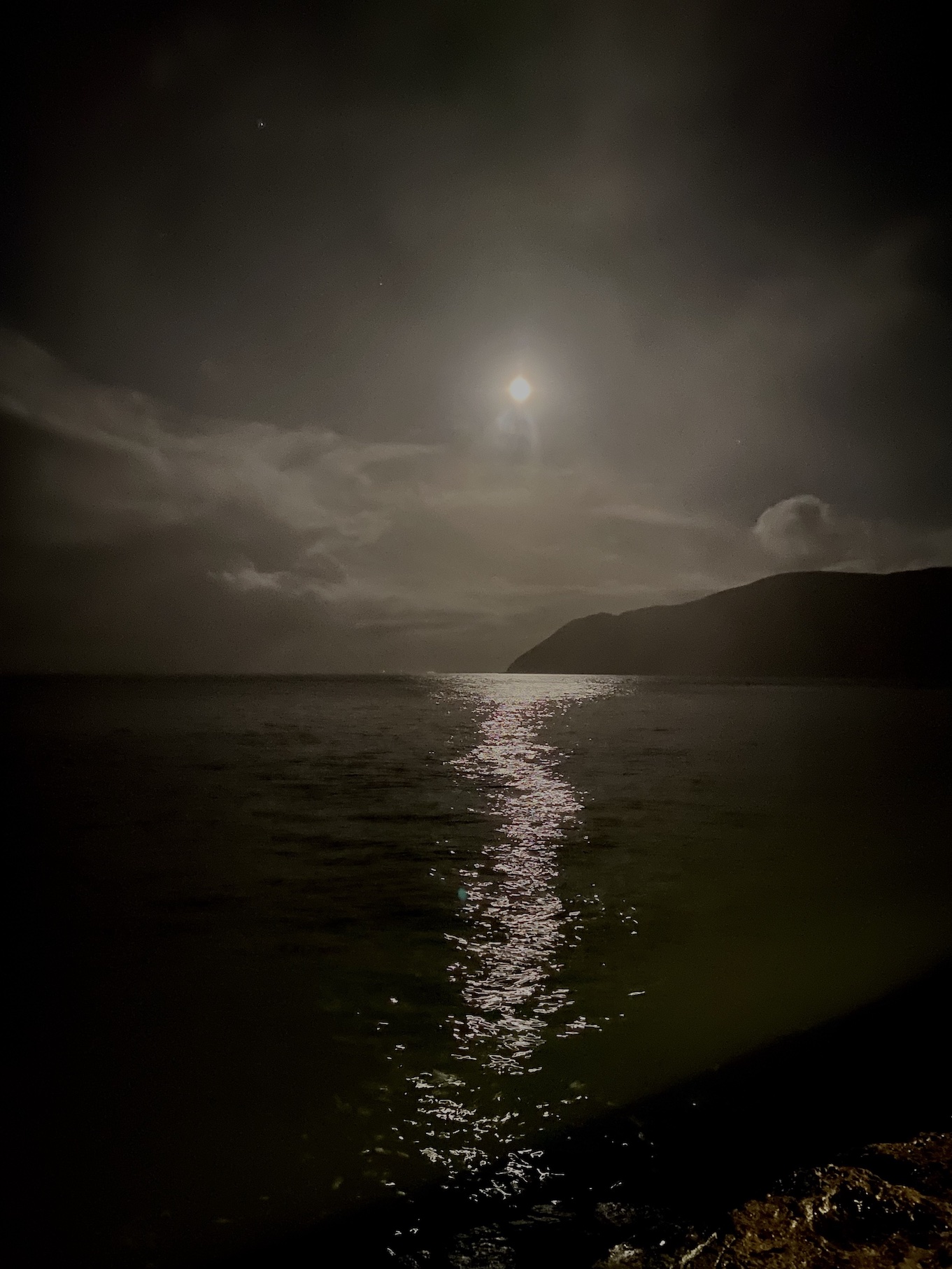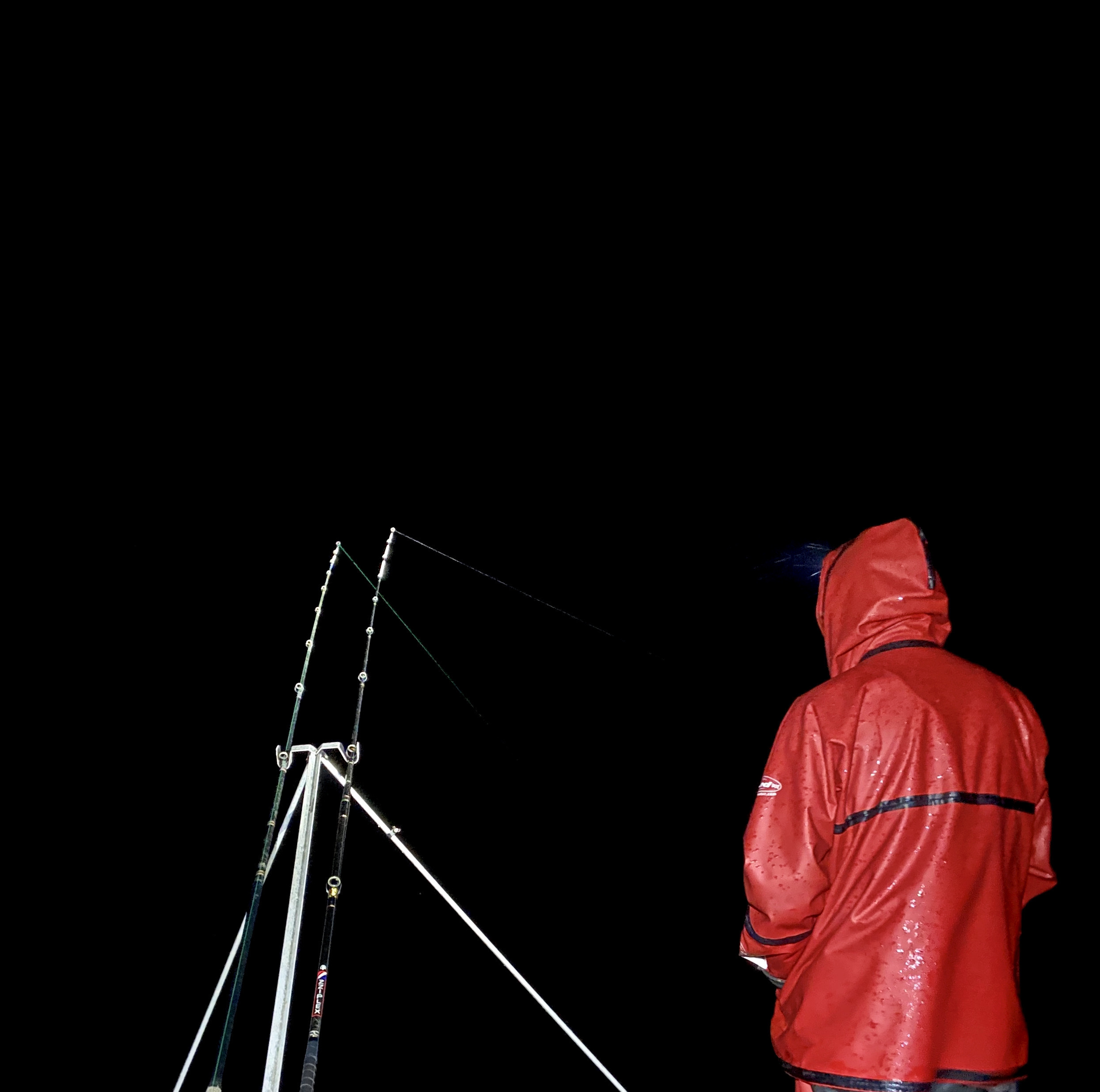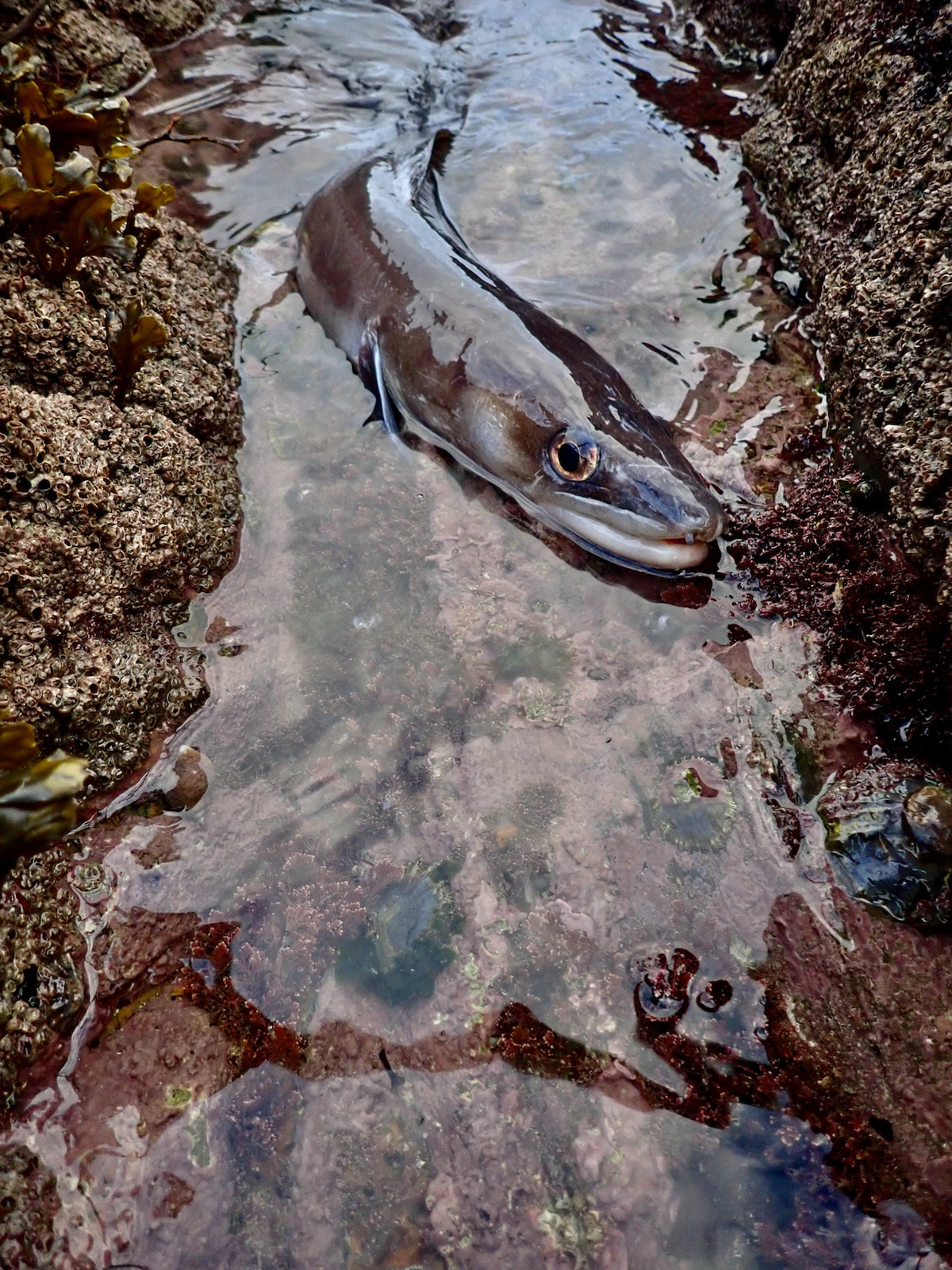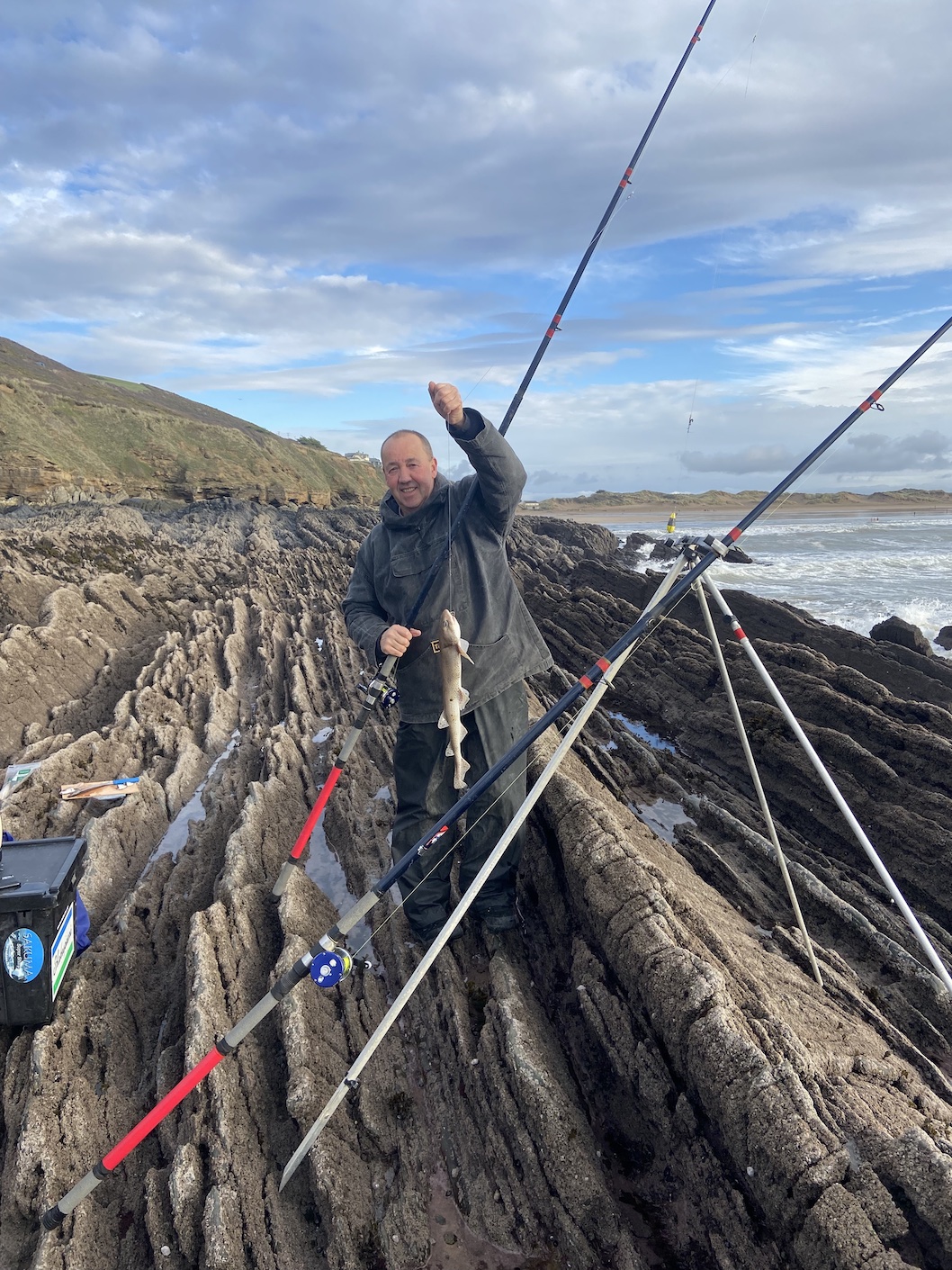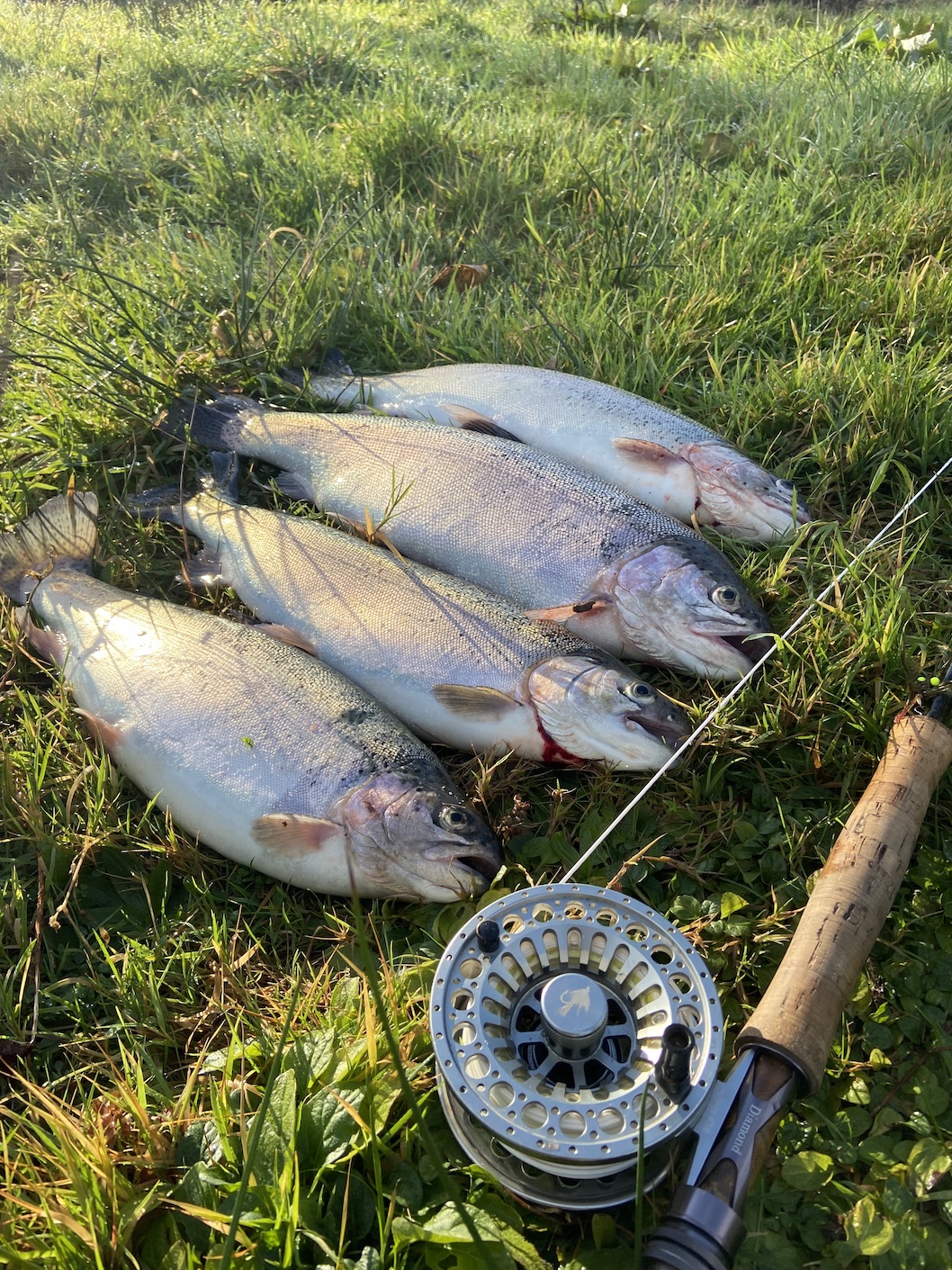Rodney Wevill – Report
That’s a wrap for Fluff Chuckers Events 2025…
On Saturday, December 13th we held the Arundell / Fluff Chuckers Still water event at Lifton on the Arundells lake.
We met at the Arundell Hotel to sign on and Tea/ coffee and Bacon Rolls in the old cock pit.

All well fed and watered we were off to the lake for a 10am start, fishing peg numbers for 30mins and moving on to the next .
Fishing a 2 hour session in the morning, 45 minutes for a on the bank lunch and then a further 2 hr session in the afternoon.
The lower pegs fished extremely well for the morning with more than 20 fish , Browns and a few Rainbows to the net.
The afternoon session was a lot harder with only a handful of fish being caught
Tactics ranged from sink 6 to floating lines, nymphs, lures, and all in between.
Roger Truscott was on fire for the first 45mins landing lots of fish with Wayne Thomas close behind.
At 3pm it was back to the Arundell to tally up the scores, some more Tea/ Coffee in front of the wood burner.
The winners ended up being in first place with 11 fish Roger Truscott
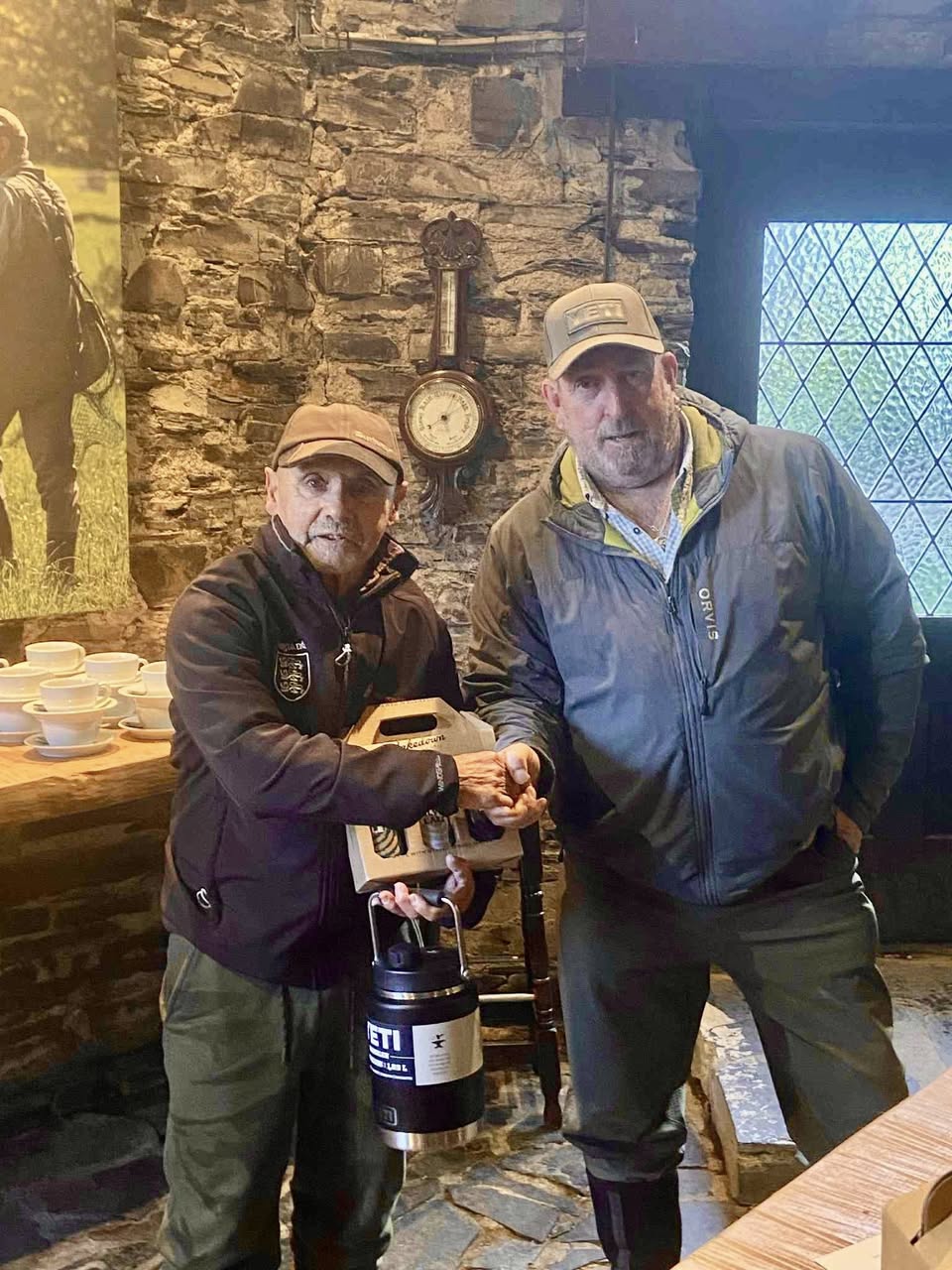
With Andrew Watson being the runner up

The winner of the biggest fish of the day a very nice Brown trout 43cm going to Wayne Thomas
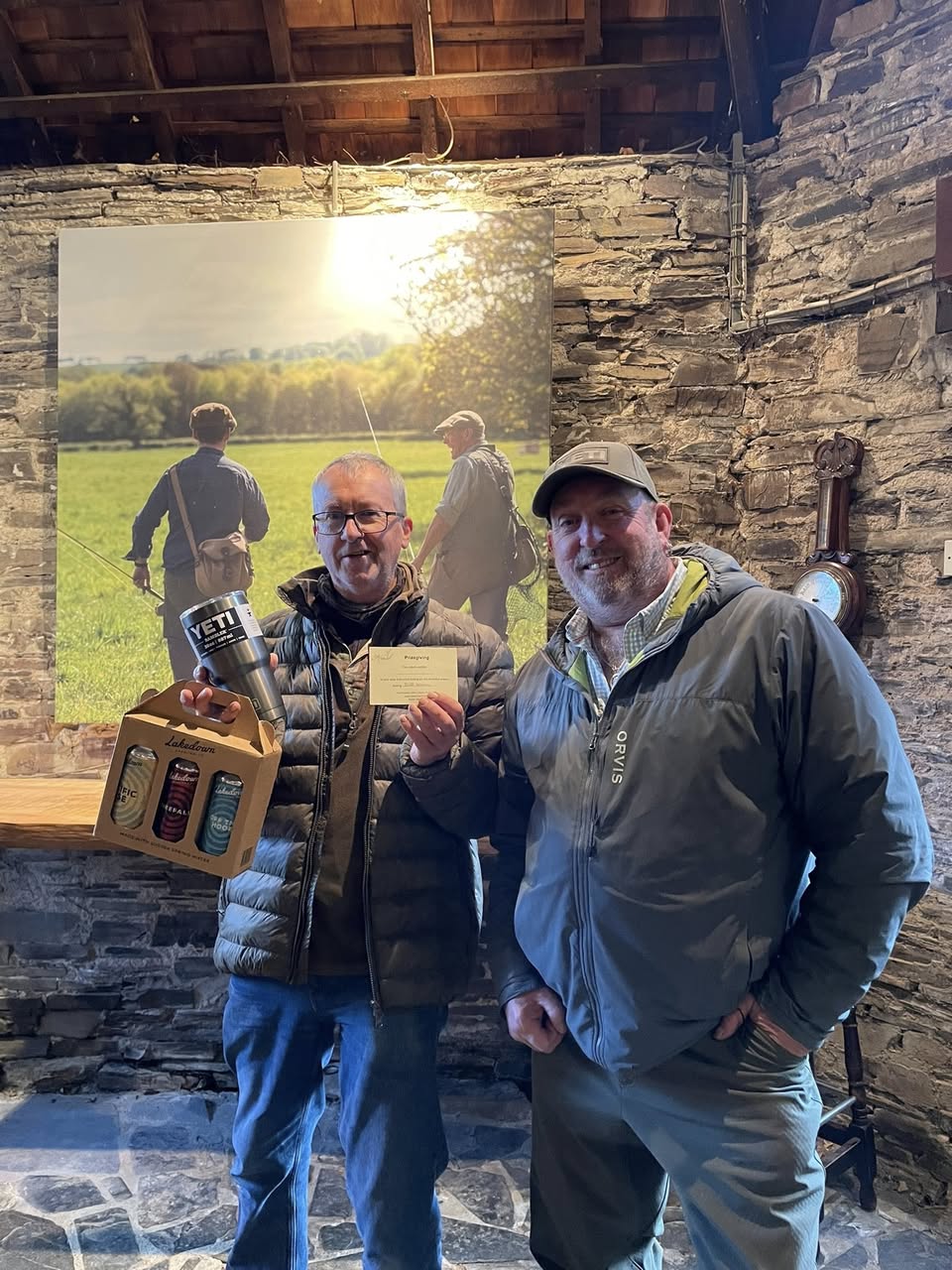
A great way to end the year and a big thank you to YETI Europe , Lakedown Brewing Co. & Tap Room, The Arundell for your continued support with the prizes.
A special thank you to James Christoforou from the Arundell for his time and wonderful hospitality not only today but also the previous 2 events held at the hotel , anyone looking for a fishing break in the South West no need to look further, some great fishing all year round with Grayling, Trout and sea trout in their seasons.
Great guides and fly fishing casting instructors if required.
The Arundell fishing shop with everything you will ever need plus wonderful accommodation and food.
And it’s situated in some of the most stunning parts of this fair Island and where I call home so I am a little biased.
Thank you to all that have supported the events throughout the year and we hope to see you all in 2026 starting with the Fluff Chuckers / SWLT Brown Trout Masters round 1 at the end of March.
A personal account of the day
The winding Devon roads took me over hills and through misty valleys as the sun slowly broke through illuminating the frosty landscape. It was a classic winter morning, sounds of the sixties on the radio and a day’s fishing to look forward to.
I arrived at my destination the Arundell shortly after 8:00am and joined Rodney Wevill and other Fluff Chucker’s in the car park as the days shooting party scurried around in readiness for their day ahead.
After a brief catch up we headed into the historic Cockpit building for bacon baps and freshly brewed coffee. Anticipation for the day ahead was high and fuelled by tales of previous trips and adventures.
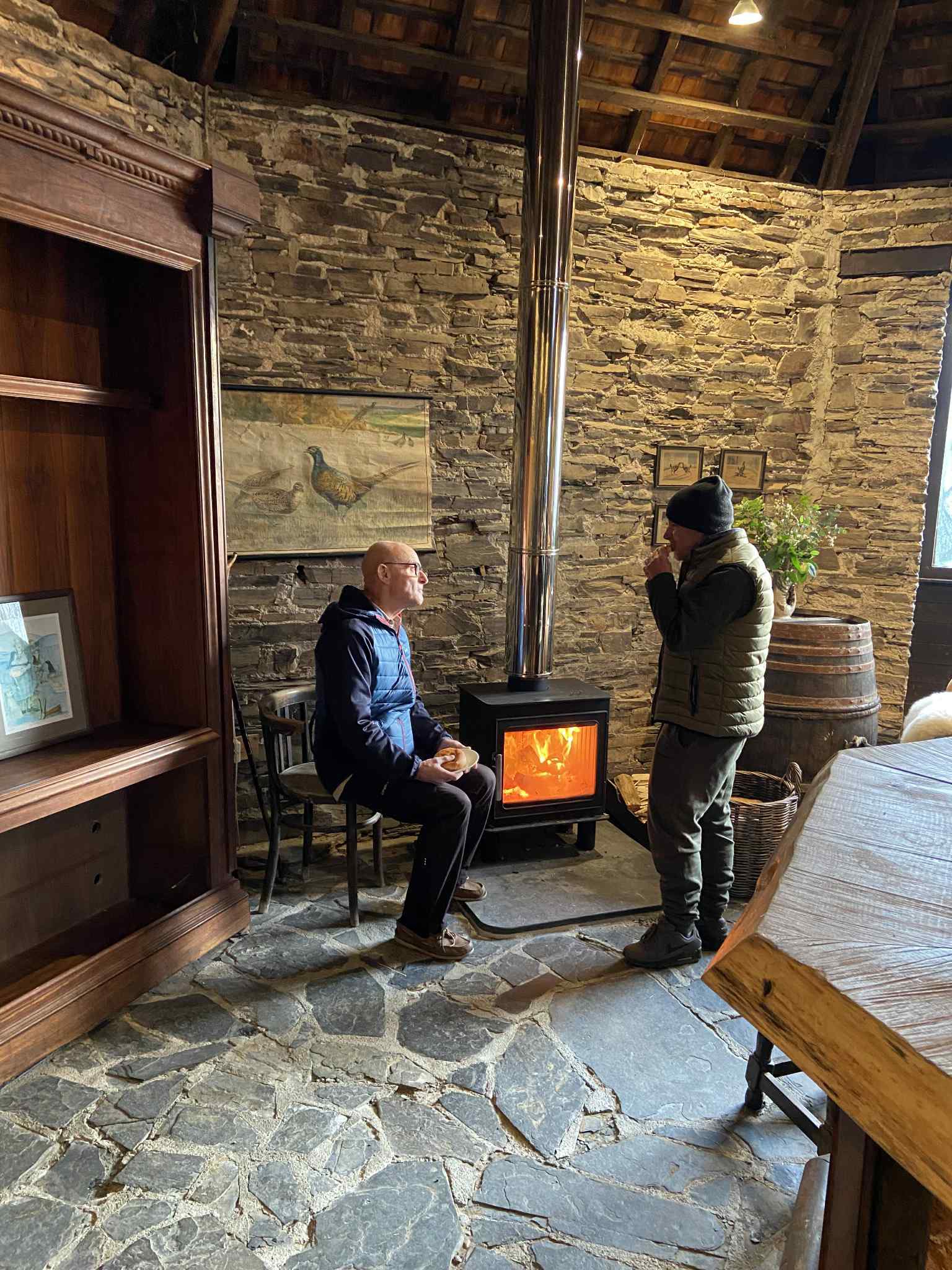
In addition to several miles of river fishing for salmon, sea trout, brown trout and grayling the Arundell has its own lake. The lake is an old flooded quarry with crystal clear water that is regularly stocked with brown and rainbow trout. Despite the average stock size being between 1lb 8oz and 2lb far larger trout are known to lurk within the deep dark waters.
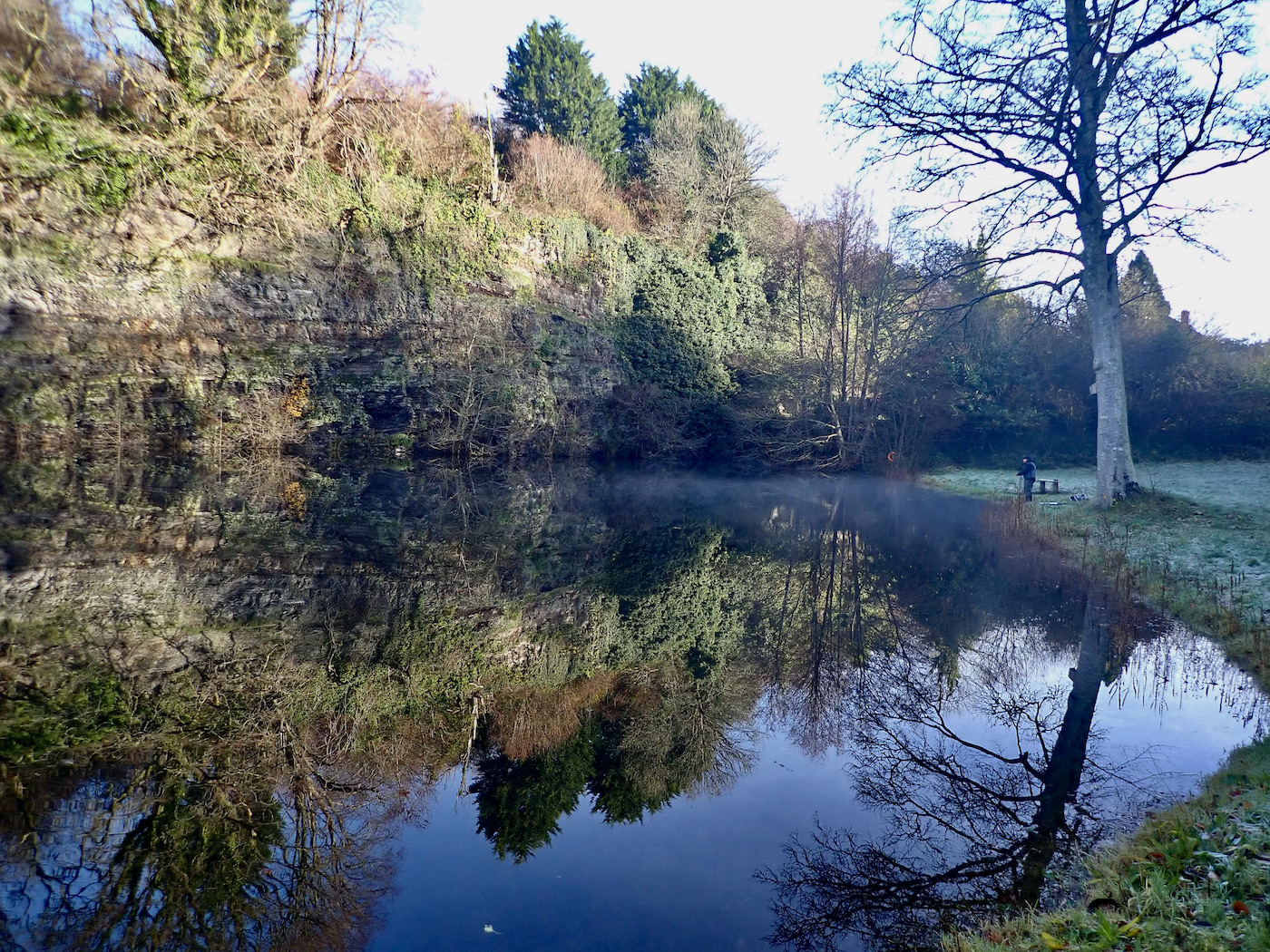
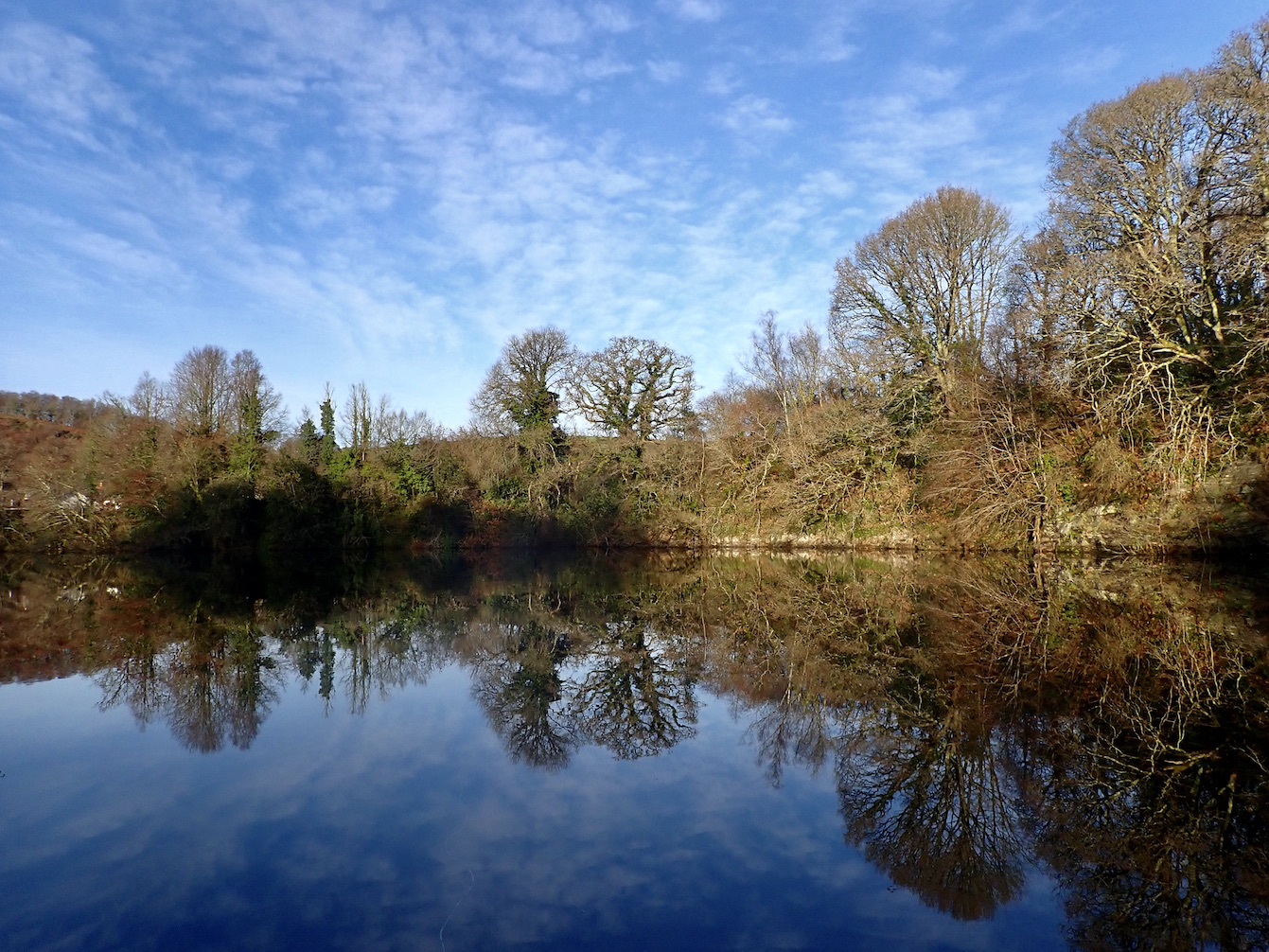
James Christoforou is head of fishing at the Arundell so before heading to the lake to compete with fellow Fluff Chucker’s I sought James advice as to tactics and flies. Following his advice I set up two rods one with a duo set up as James thought it likely that the fish would be near to the surface. The other rod was set up with a rather drab gold-head lure on the point with a flexible tail dressing that would flutter attractively in the water.

The competition started at 10:00am with each angler on their drawn peg. Every half an hour each angler would move two pegs ensuring that by the end of the day each peg had been fished.
I had drawn peg one with Roger Truscott to my right on peg two. Shortly after cast off I glanced over to see Rogers rod bent as a trout splashed about on a tight line. Within a few moments of releasing this trout Roger was in again and I wondered just how he has such a knack of connecting with the trout!
I cast my line and watched the leader intently lifting the rod briskly when it twitched slightly as the lure sank in the clear water. It was good to connect and get a fish under my belt. As we moved pegs I asked Roger how many he had caught and he replied “eight or nine I think”. By this time I had managed a brace of rainbows and browns.
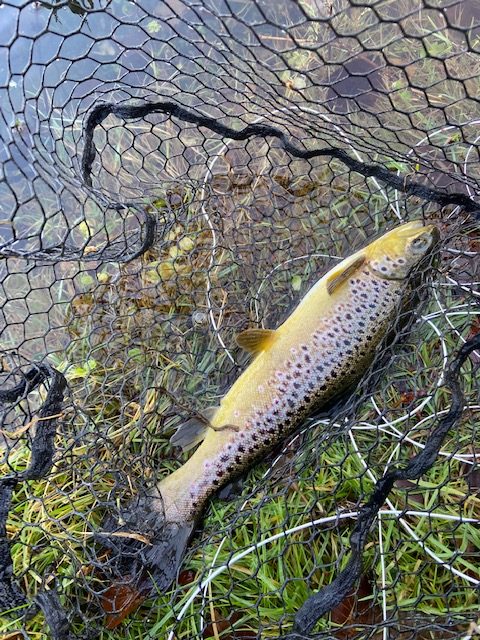

As expected the catch rate started to drop for all and by the end of the morning I think Roger was on nine whilst I was on seven.
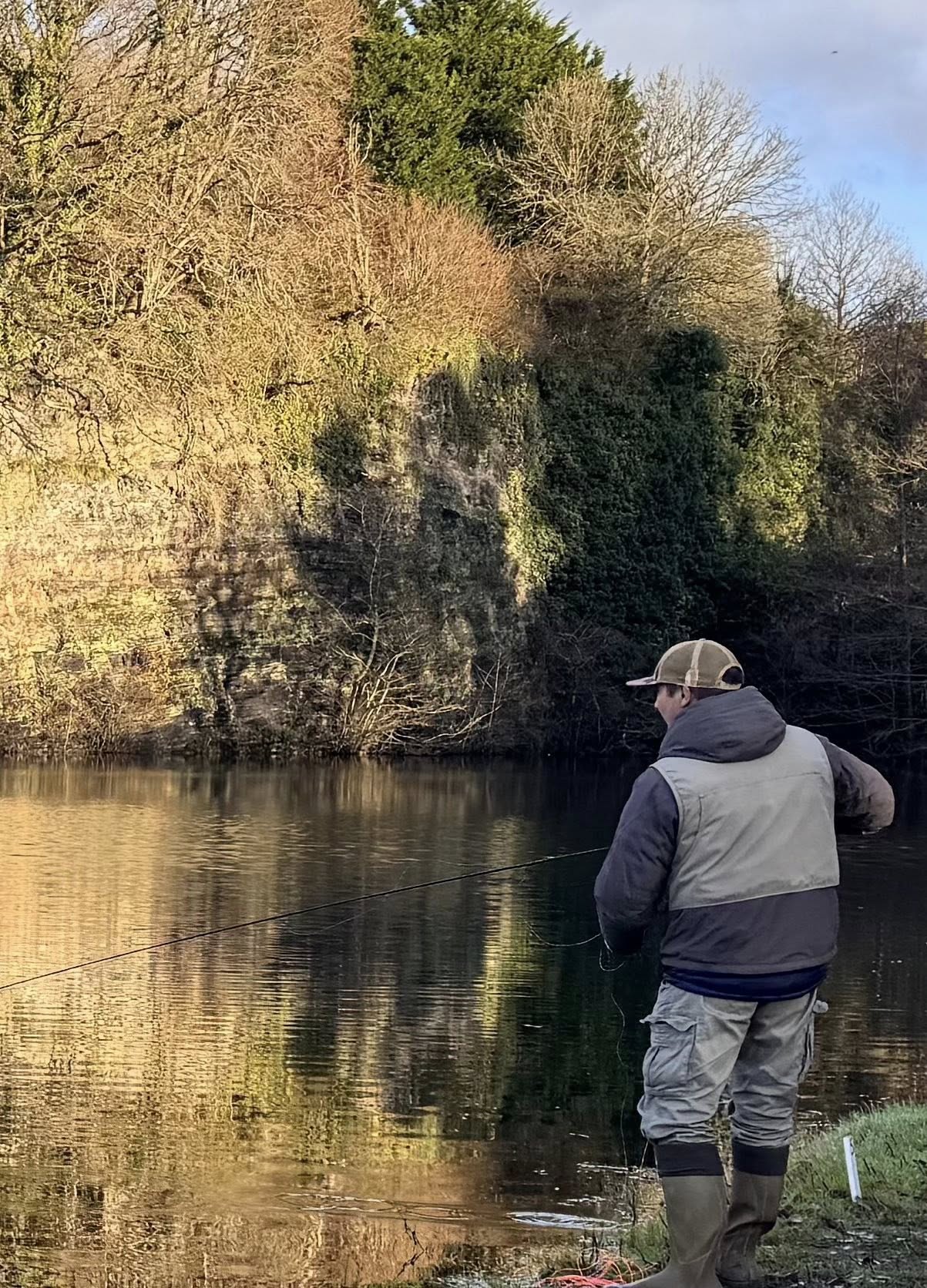
We stopped for lunch at midday and James delivered hot pasties and coffee to those who requested it. For half an hour we all chatted and analysed the mornings fishing. It was obvious that Roger and I had received a big slice of good fortune as pegs one to four were undoubtedly well populated with recently stocked fish. The two end pegs at the lakes far end producing no trout.

The afternoon was surprisingly slow and I only added one fish a 43cm brown trout that was the biggest of the day. Roger once again proved his dominance of Fluff Chucker events ending the day with eleven trout.

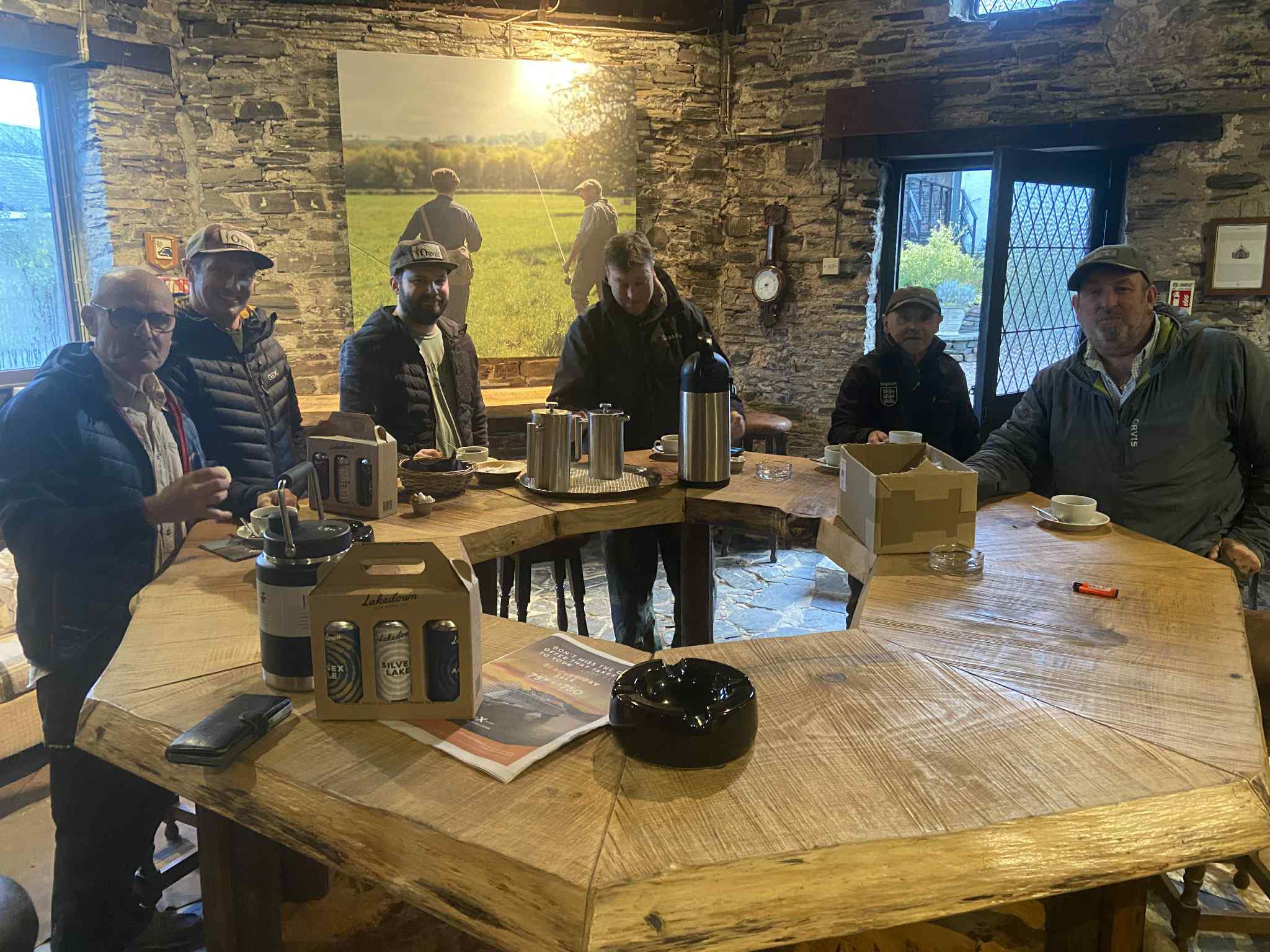
We retired once again to the warmth of the Cockpit for the prize giving and a hot coffee. Rodney Wevill does an exceptional job at organising these friendly events and securing sponsorship from Yeti, Lakedown Brewing co & Tap Room. And of course the Arundell whose waters are always a joy to fish.



